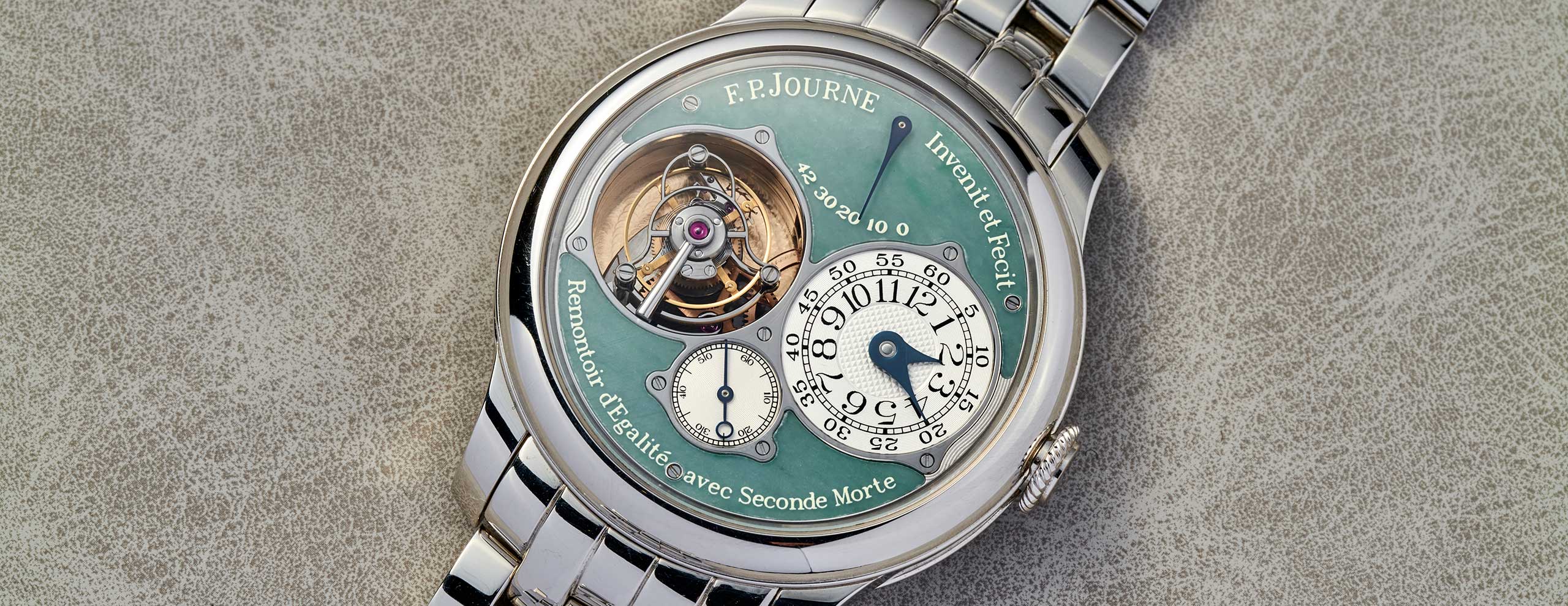Part one in a three-part exploration of F.P. Journe’s place in history, starting with the Tourbillon Souverain.
Over the last few years, we have witnessed
François-Paul Journe achieve the recognition he had long been due, be it in his pursuit of better chronometry, his intellectual yet practical approach to complications, or his artistic interpretations of time. He is justly regarded as the greatest watchmaker known in our time for the astounding variety of his conceptions, his ability to establish and maintain a unique design language across every field of inquiry, as well as his unfaltering mechanical elegance.
To comprehend the present-day valuations of Journe’s watches and their uptick in demand in recent years, it is worth revisiting the context of these watches in Journe’s career and their place in horological history. In this three-part series, we take a look at the minutiae and price performance of three watches, two of which represented milestones in the development of the wristwatch and carried on the tradition of scientific inquiry from the 18th century — the Tourbillon Souverain and Chronomètre à Résonance — and the third, a magnificent outlier — the trilogy of Vagabondage watches — that demonstrated how his genius also extended onto more artistic and emotional expressions of time.
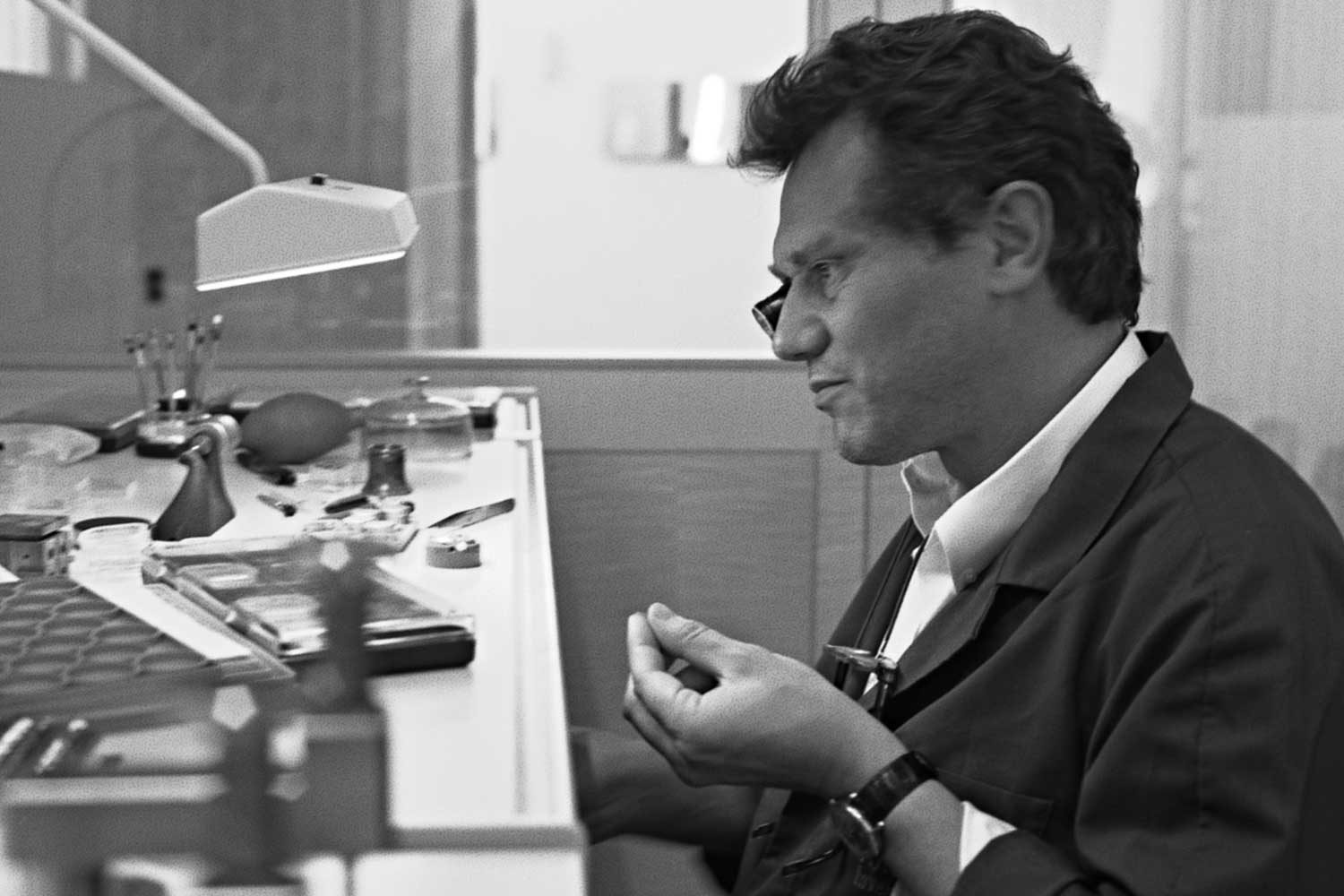
François-Paul Journe
We would like to extend our sincere acknowledgment and appreciation for the contributions that have made this report possible. It is important to emphasize that the data included herein has been provided by EveryWatch and the dedicated F.P. Journe team.
EveryWatch.com specializes in gathering comprehensive historical and current watch information from 250 auction houses and marketplaces worldwide, establishing its position as the largest watch market data provider and platform of its kind. Furthermore, we are indebted to the diligent efforts of numerous F.P. Journe scholars who have laid the groundwork and provided a solid foundation for this guide.
The Tourbillon Souverain underwent a protracted period of incubation before it saw the light of day as a serially-produced watch. Journe had initially proposed the idea of a tourbillon wristwatch to both Asprey and Breguet, but was declined by both esteemed companies. Nonetheless, he went on and completed the first three prototypes in 1991, including the very first numbered 11/91 which still remains in his personal collection today, and showed them at Basel fair in 1991. They were made in platinum with gold movements and, notably, had a cone-and-feeler power-reserve mechanism exposed on the dial at 11 o’clock in addition to the aperture at six o’clock that displays a remontoir stop wheel supported by a black polished cock.
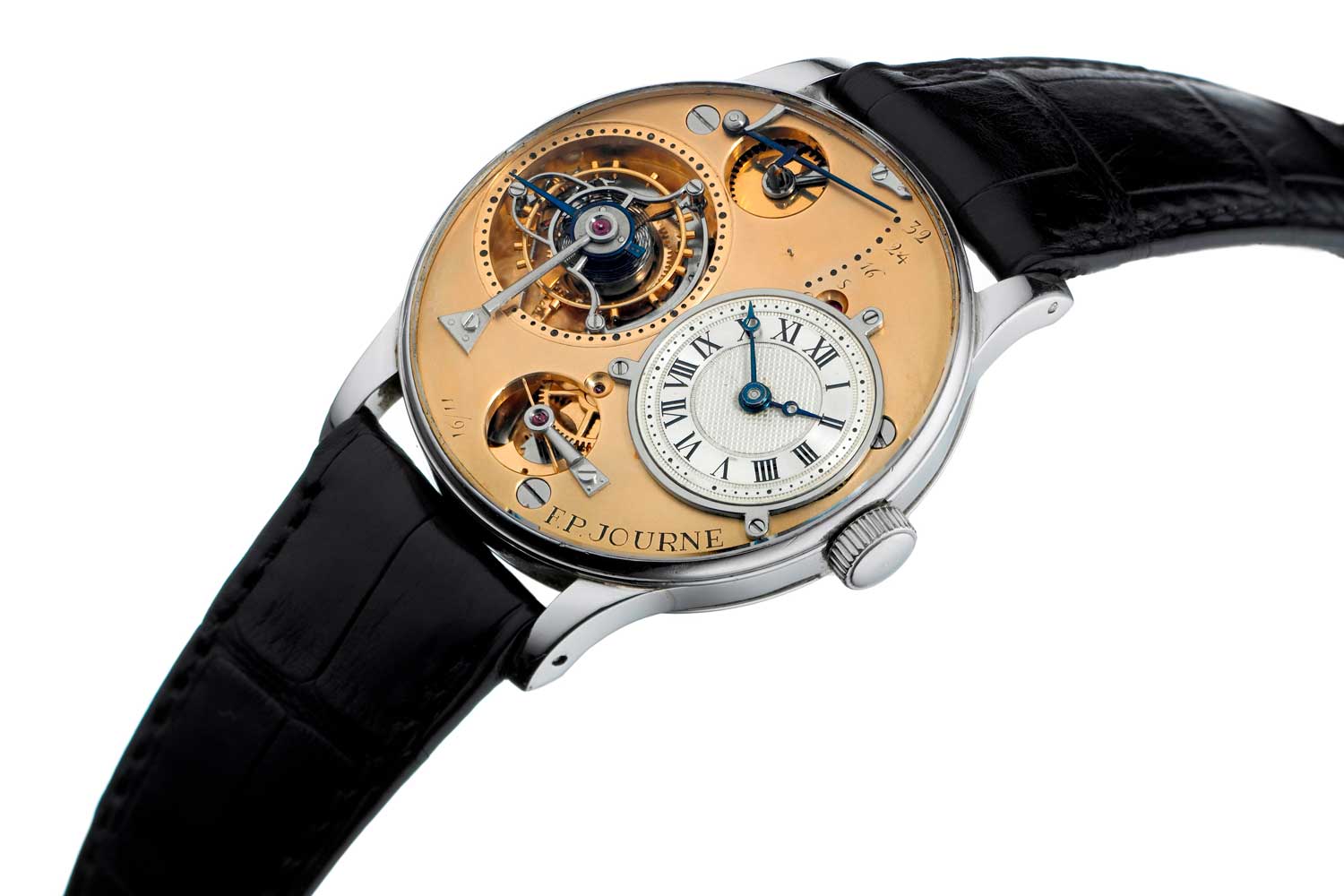
The very first Tourbillon Souverain prototype numbered 11/91 (1991) which still remains in Journe’s personal collection today
The watch world was a very different place back in 1991 and tourbillons had just begun to surface for purposes other than honors in the observatory chronometer time trials. Daniel Roth had unveiled the Tourbillon Ref. 3350 at Breguet just three years prior and Jaeger-LeCoultre was still a few years away from launching its first tourbillon wristwatch. Both A. Lange & Söhne and its Tourbillon Pour le Mérite were three years away from their grand debut, and George Daniels was a year away from completing the legendary Spring Case Tourbillon. Journe’s tourbillon distinguished itself as the first-ever wristwatch to combine a tourbillon with a remontoir d’égalité. It demonstrated his abiding commitment to the fundamental ideals of horology by uniting the inventions of Abraham-Louis Breguet and John Harrison within the small confines of a wristwatch.
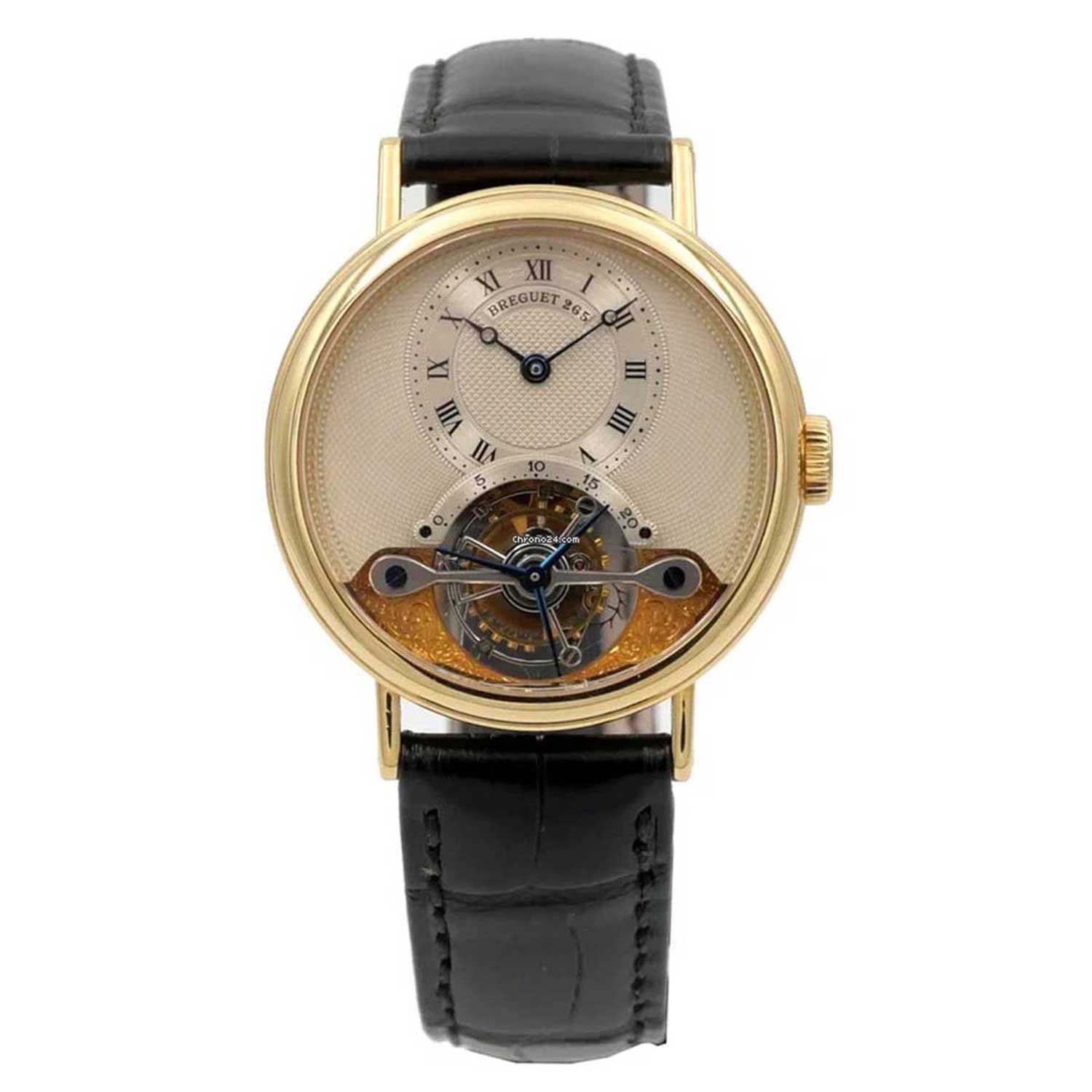
Breguet Tourbillon Ref. 3350 (Image: Chrono24.com)
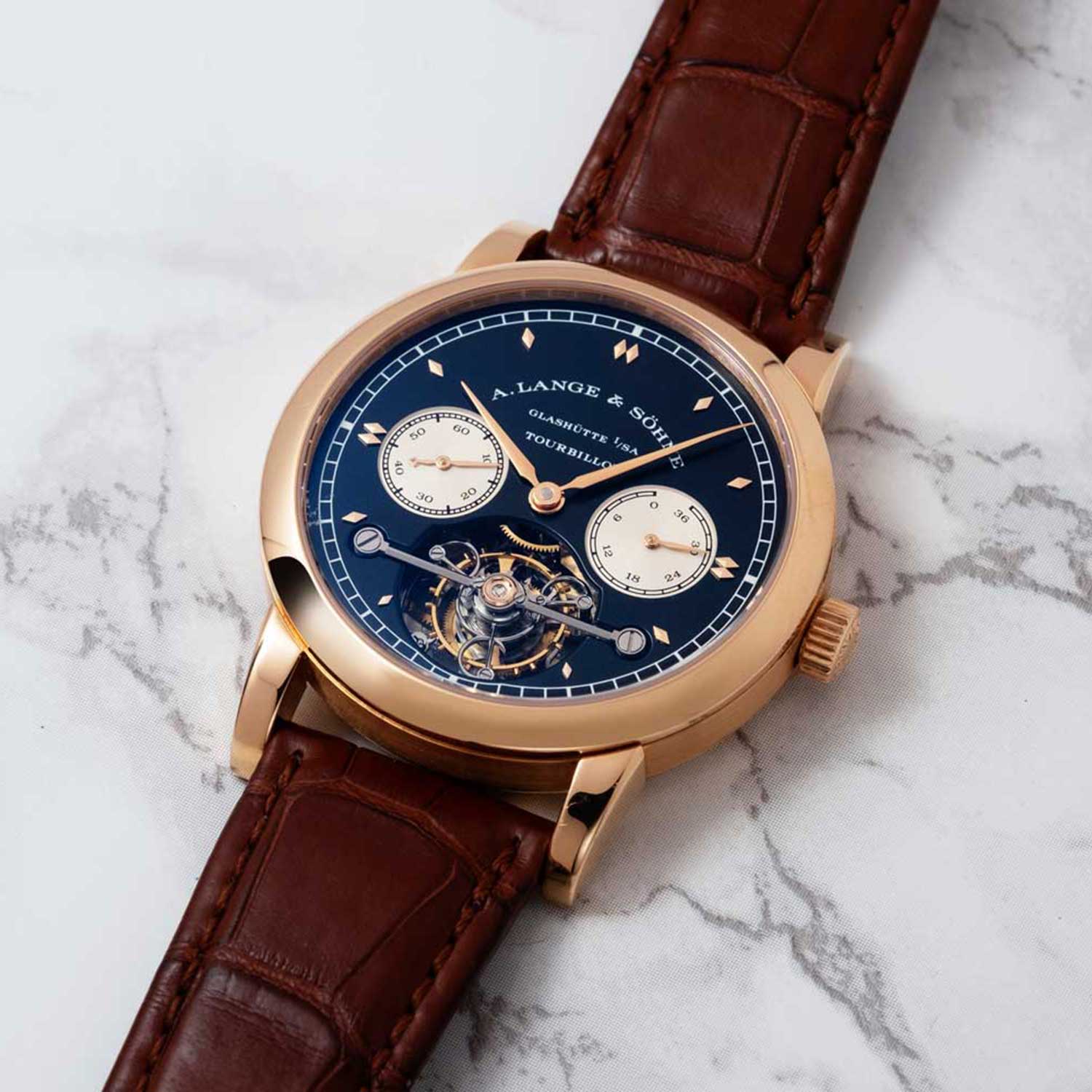
A. Lange & Söhne Tourbillon Pour le Mérite (Image ©Revolution)
While a tourbillon was invented as a genuine aid to rate stability, it simultaneously introduces additional inertia and friction, due to the weight and rotation of the cage. This effect becomes more pronounced as the mainspring gradually winds down, leading to a drop in balance amplitude. A solution to this would be a spring remontoir, a device John Harrison implemented in his H2 marine chronometer as an advancement of the gravity remontoir originally invented by Jost Burgi during the 16th century. It is essentially a secondary spring located along the gear train that would serve as an unvarying source of energy to the tourbillon regardless of the torque in the mainspring. However, instead of using a spiral remontoir like Harrison, George Daniels and all the other modern watchmakers today, Journe chose to implement a blade spring for the sake of compactness. It tensions a pivoting lever which oscillates back and forth, imparting a measured burst of energy to the escapement as it locks and unlocks.
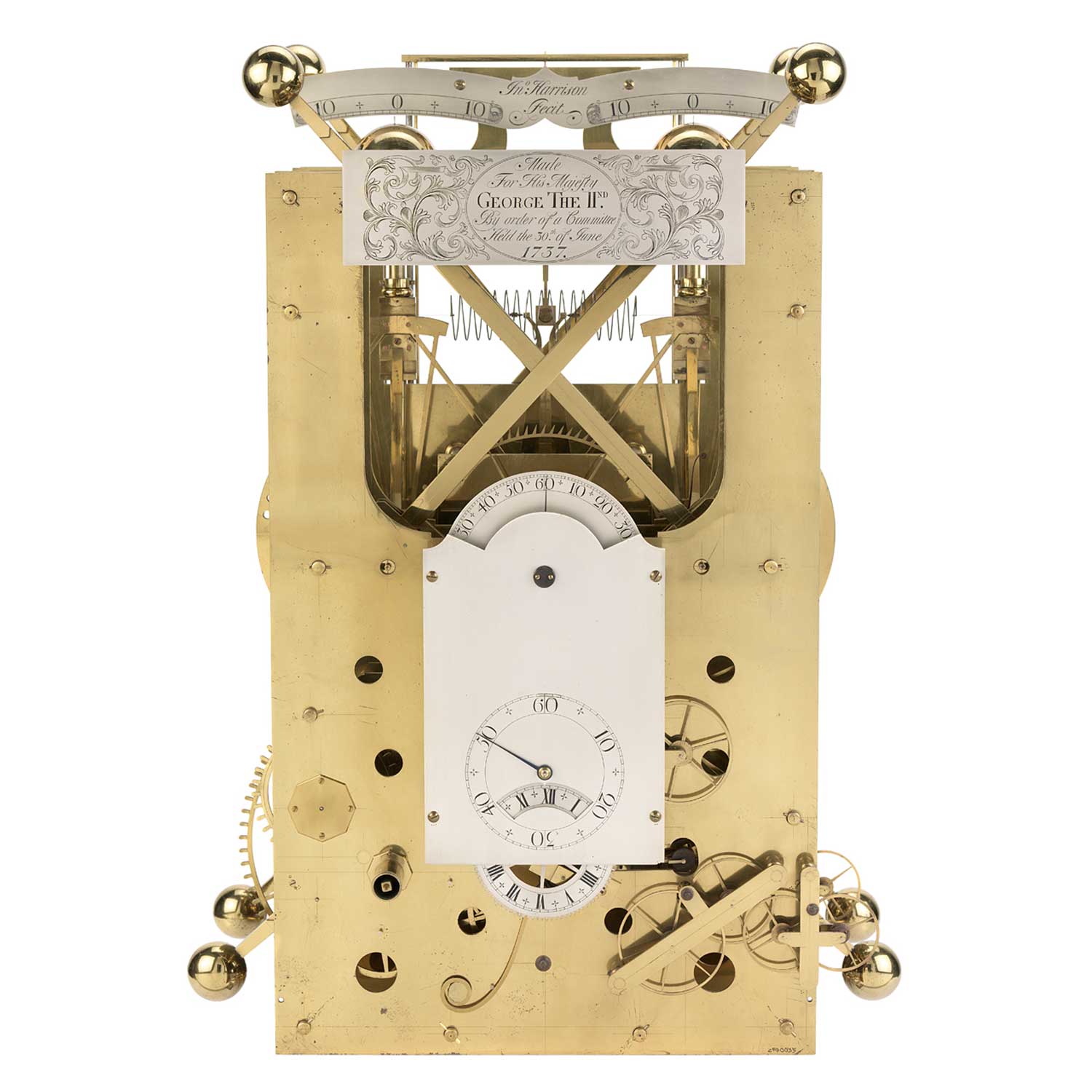
H2 marine chronometer (Image: Royal Museums Greenwich)
Beyond that, the Tourbillon Souverain also introduced a distinctive design language that drew from classical designs of the great masters, but also demonstrated an exceptional level of originality and contemporaneity that would be skilfully preserved in all subsequent models. In fact, the endeavor to achieve not only better chronometry, but also slimness, as well as a distinctive and consistent aesthetic, generated a productive tension that would result in watches that are remarkably resonant today.

A Tourbillon Souverain produced on commission for a collector in 1993
The Tourbillon Souverain was initially produced on commission before it was launched in 1999 in a series of 20 on a subscription basis, a concept borrowed from Breguet whereby buyers committed to purchasing the watch before it was produced, which helped get his brand off the ground. The model Ref. T (for Tourbillon) is colloquially demarcated into four different series, followed by the Ref. TN (Tourbillon Nouveau) prior to the introduction of the Ref. TV (Tourbillon Vertical) in 2019. Note that the Ref. T is also often referred to as the first generation, with the Ref. TN being the second generation.
Although the subscription watches were offered in platinum as well as all three colors of gold, the price disparity between gold and platinum was so marginal that opting for platinum became the more logical choice. Thus, the majority of early watches were produced in platinum.
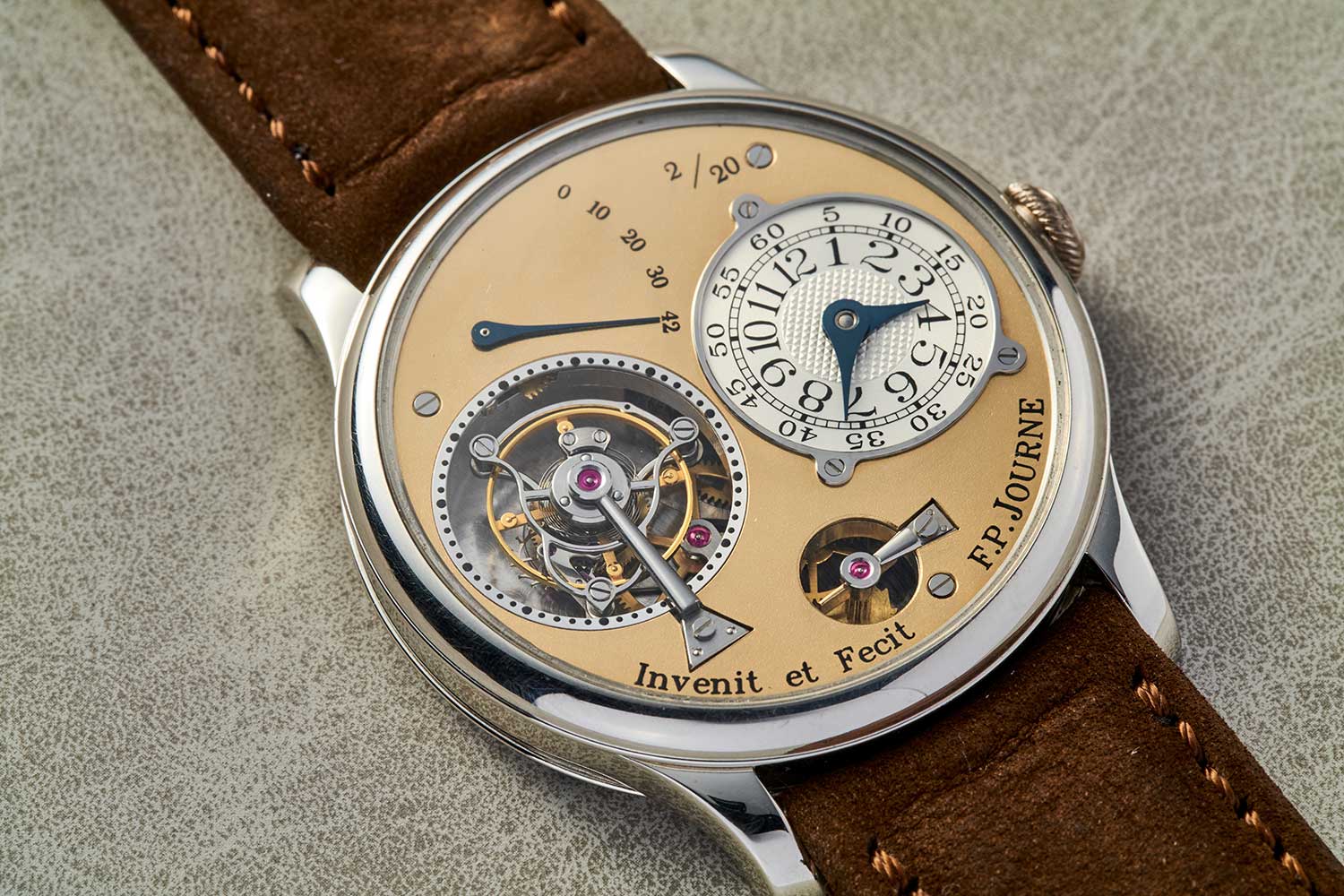
Tourbillon Souverain “Souscription,” No. 2/20, otherwise known as the first series with this example being the second Tourbillon Souverain produced. The Souscription series represents the only Tourbillon Souverain watches that were numbered both on their dials and the case back. The dial has been hand-finished and is further distinguished by having a rounded, black polished remontoir cock which would later be replaced by a flat one in the third series.
Regarded as the first series, the subscription series of 20 watches were all made in 38mm platinum cases with yellow gold dials. They were chiefly distinguished for having their serial numbers both printed on the dial and engraved on the casebacks, while the watches in subsequent series would only be numbered on their casebacks. To indicate the position within the limited run of 20 subscription watches, they were notated in a format of XX/20 on the dials and No. XX on the casebacks. The inscriptions on the caseback were engraved by hand and noticeably shallower as opposed to the deeper engravings applied by laser on later examples.
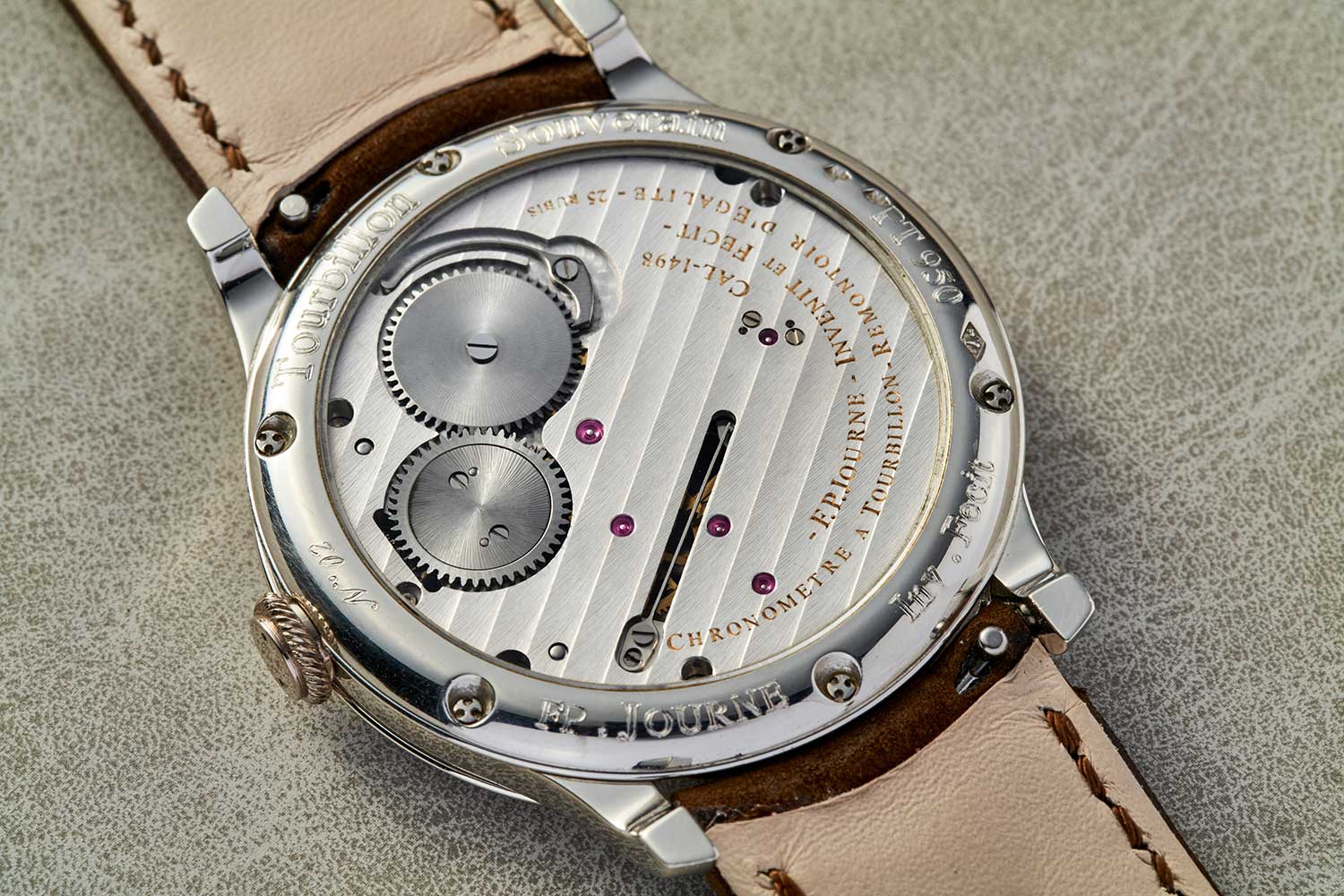
The engravings on the case back are applied by hand on the present Souscription watch as opposed to the deeper engravings applied by laser on later examples
At nine o’clock on the dial was a one-minute tourbillon which was distinguishable from the third generation onwards by the slightly larger seconds markings surrounding the aperture and a small hole on the edge of the cage used for poising. The cock that supported the remontoir stop wheel was also rounded and polished. This which would later be replaced by a flat one in the third series. Additionally, the numerals for the power-reserve indicator were comparatively smaller than that for the second and third series.
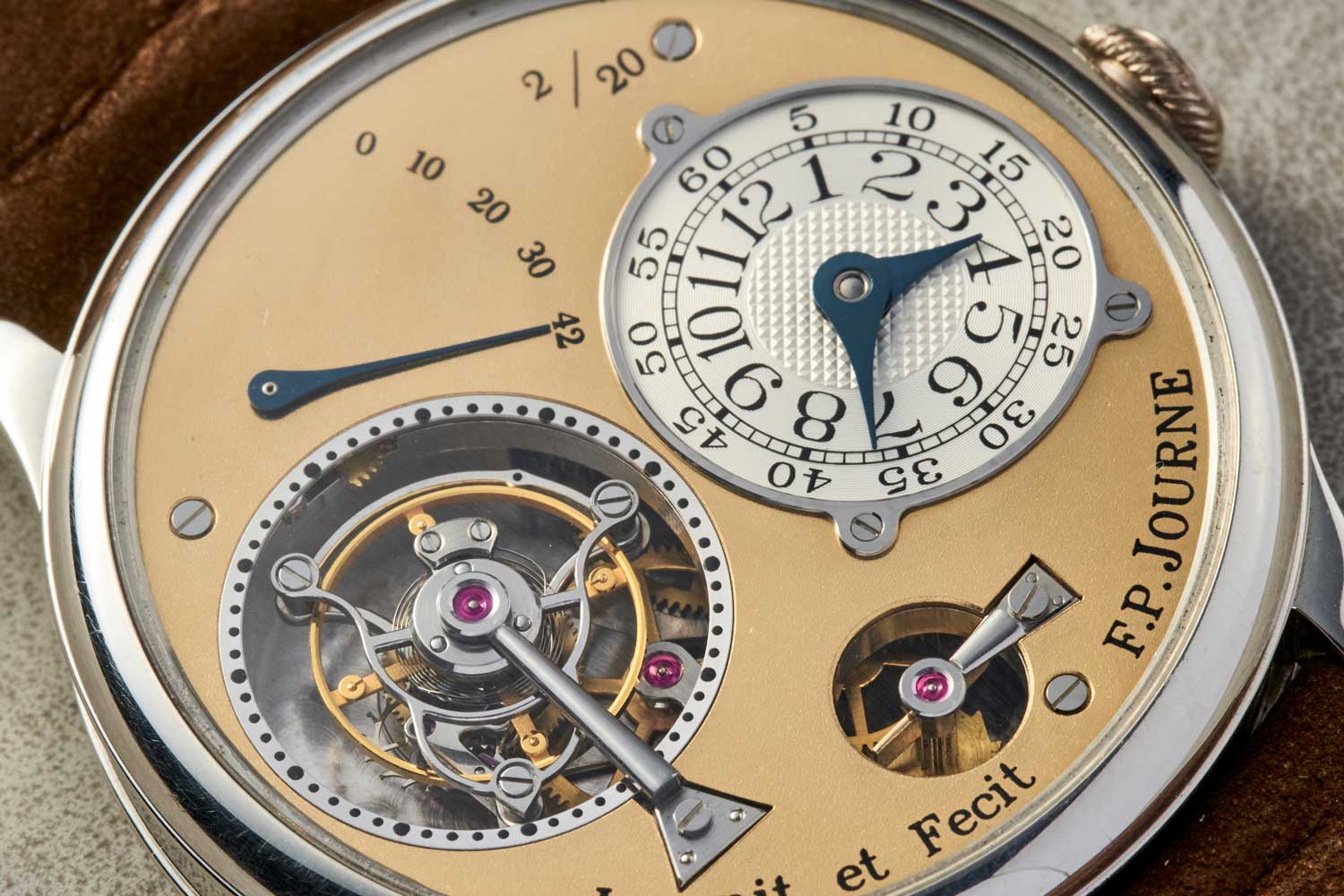
At nine o’clock on the dial is a one-minute tourbillon which is distinguishable from later generations by the larger second markers surrounding the aperture and a small hole on the edge of the cage
The baseplate and bridge of the caliber 1498 were made of rhodium-plated brass and this would persist until the end of the fourth series in 2003.
Following the first 20 watches, the second series emerged with an estimated run of 17 examples in platinum, featuring yellow or white gold dials. Notably, adorning the dial at the 12 o’clock position was the inscription “Remontoir d’Égalité”, which became a fixture from here onwards. The seconds dot markers surrounding the tourbillon aperture are also noticeably smaller, while the numerals for the power reserve are larger than that in the first series.
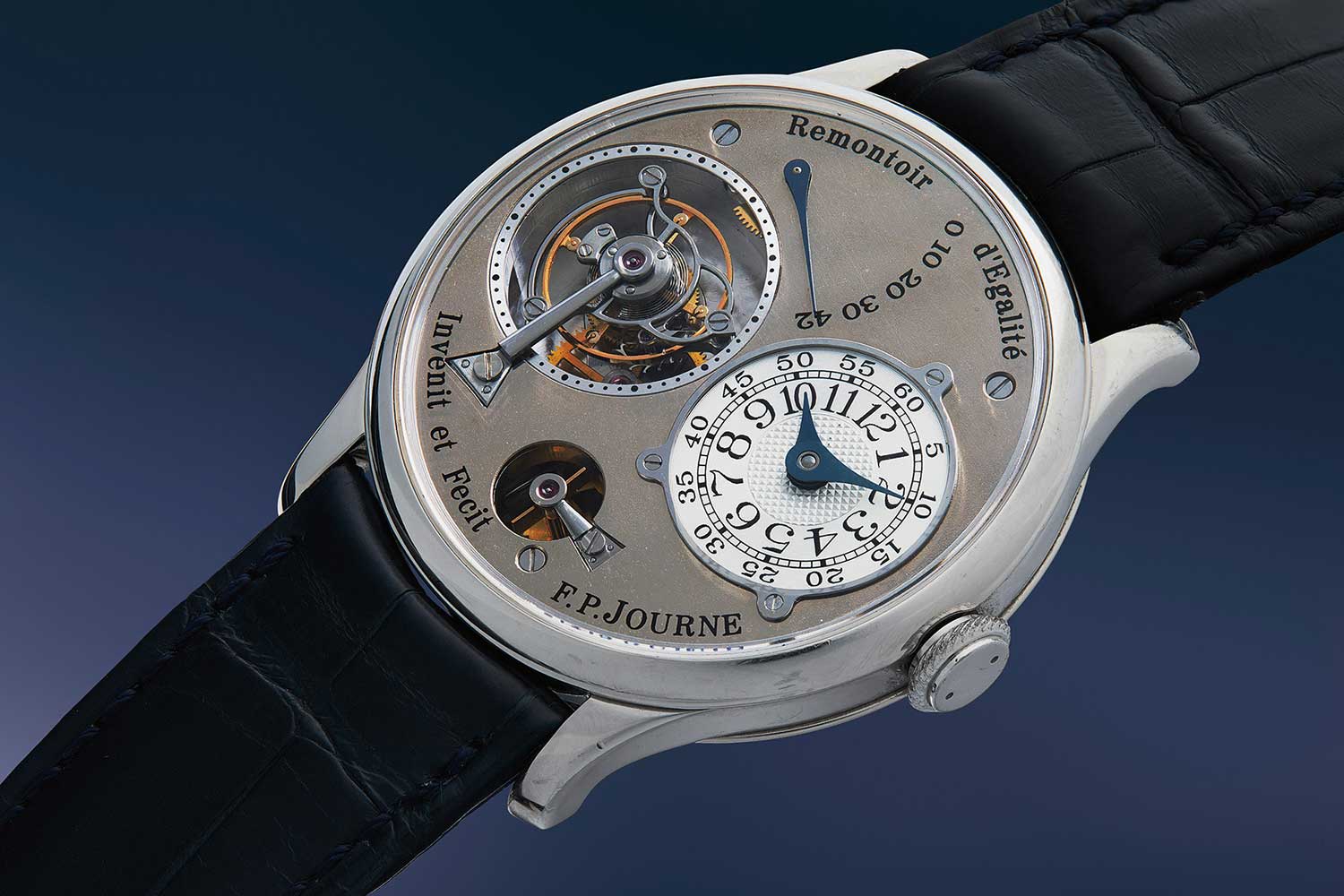
A second series example with a white gold dial sold for US$1,361,000 at Phillips New York Watch Auction Six in June 2022 (Image: Phillips.com)
The numbering system employed for these watches underwent a shift with the 35th model, transitioning from the No. XX format on the caseback to the new XX/99T format. Here, the “99” signifies the year 1999, while the appended “T” denotes the Tourbillon complication. With the exception of these modifications, the second series is identical to the subscription series.
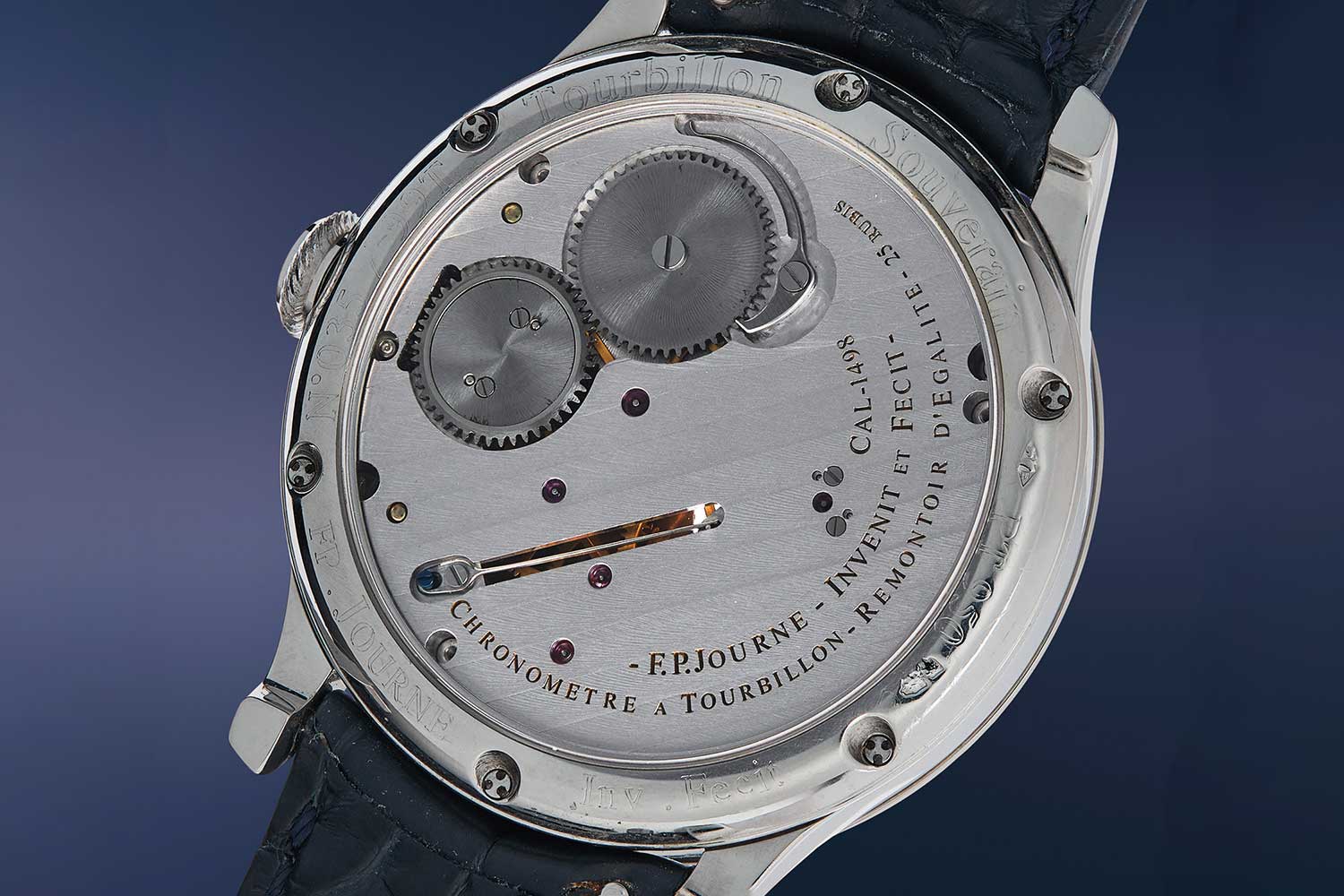
This example bears the serial number 35/99T and is the first known watch to adopt this numbering format (Image: Phillips.com)
Then came the third series which was produced in an estimated run of 60 examples in both platinum and red gold (18K 6N), with the latter being a small minority. The third series also saw the introduction of red gold dials. The most obvious difference between this series and the first and second series is the flat, black polished cock that holds the remontoir stop wheel.
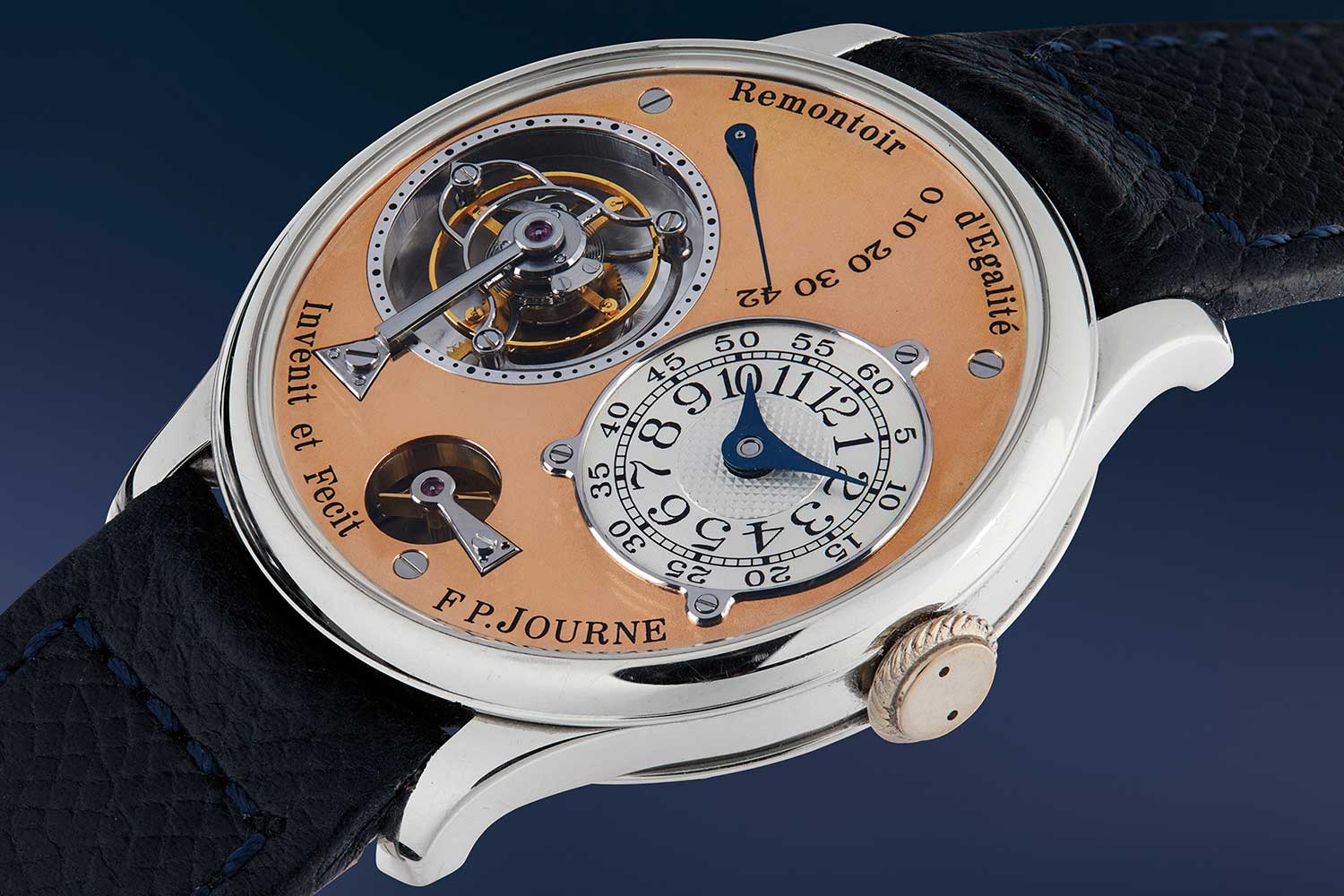
A third-series example with the then-newly introduced red gold dial sold for US$1,240,000 at Phillips New York Watch Auction Seven in December 2022, setting a record for the series (Image: Phillips)
While early dials were hand-finished, it appears that hand-finishing was eventually discontinued during the third series. Notably, the early dials were also coated with a layer of clear lacquer, which bestowed upon them a distinctively lustrous surface and created the illusion that the text was suspended above the dial. This particular feature was replaced instead by a matte finish sometime during the third series. As a general trend, the dials gradually transitioned from a radiant and vibrant appearance to a more subdued matte texture over time.
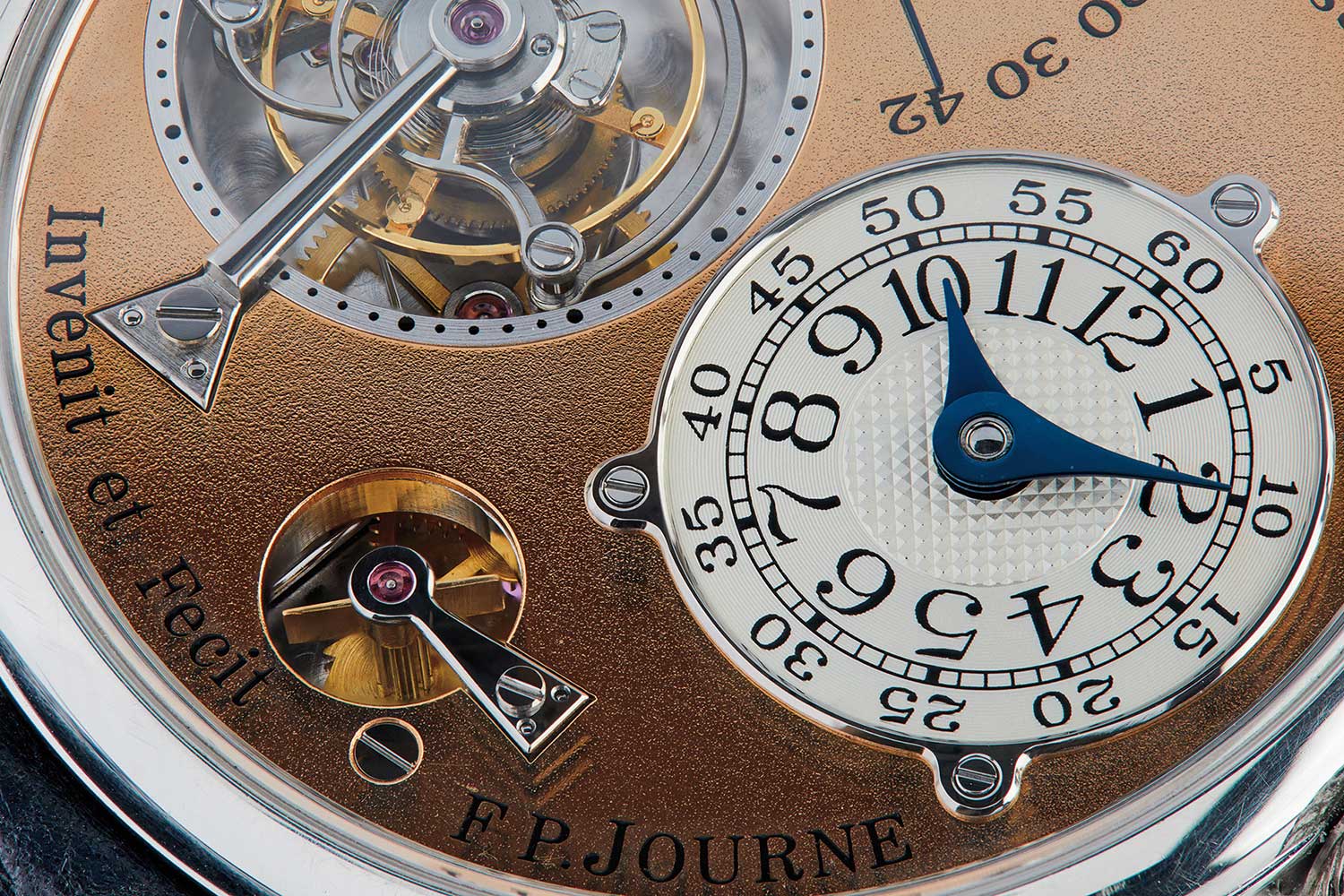
The third series can be distinguished by its flat, black polished cock that supports the remontoir stop wheel. This example numbered 038 has a hand-made dial that is finished with clear lacquer, creating the illusion that the text is suspended above the dial surface (Image: Phillips)
The third series examples were assigned numbering in either XX/99T or XX/01T format, reflecting F.P. Journe’s substantial production of resonance watches during the year 2000.
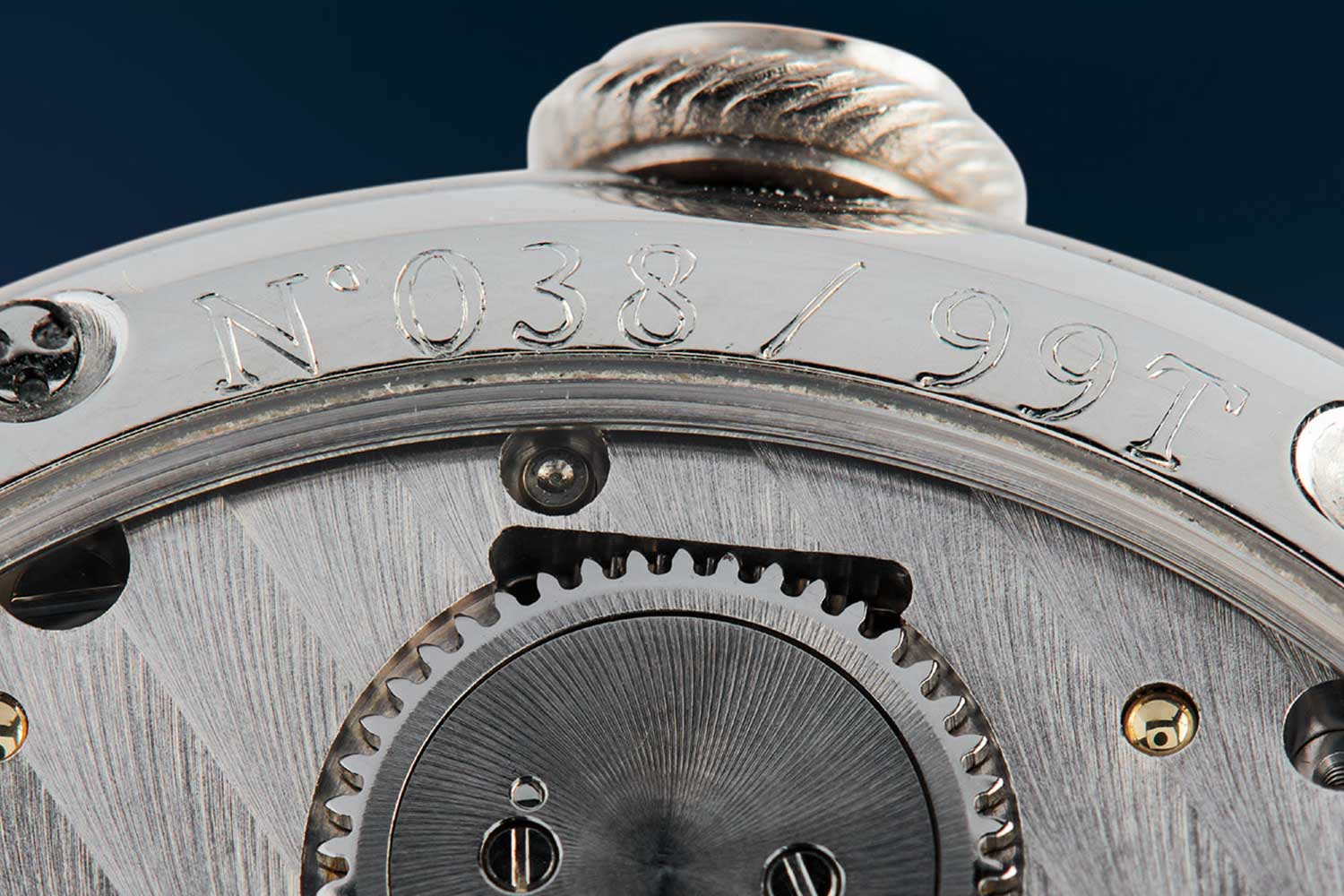
This example bears the serial number 38/99T on its case back (Image: Phillips)
Fourth Series (2001–2003)
The fourth series was produced in an estimated run of 320 examples between 2001 to 2003, in platinum and red gold with either yellow, white or red gold dials. A key distinguishing feature that set them apart from the third series was the much smaller dial screws. As an aside, the screws on the caseback also underwent a change in the fourth series, transitioning from regular flatheads to holt heads, characterized by three notches. However, this modification was also applied to earlier models when they were serviced at the manufacture, which explains their presence on earlier pieces as well.
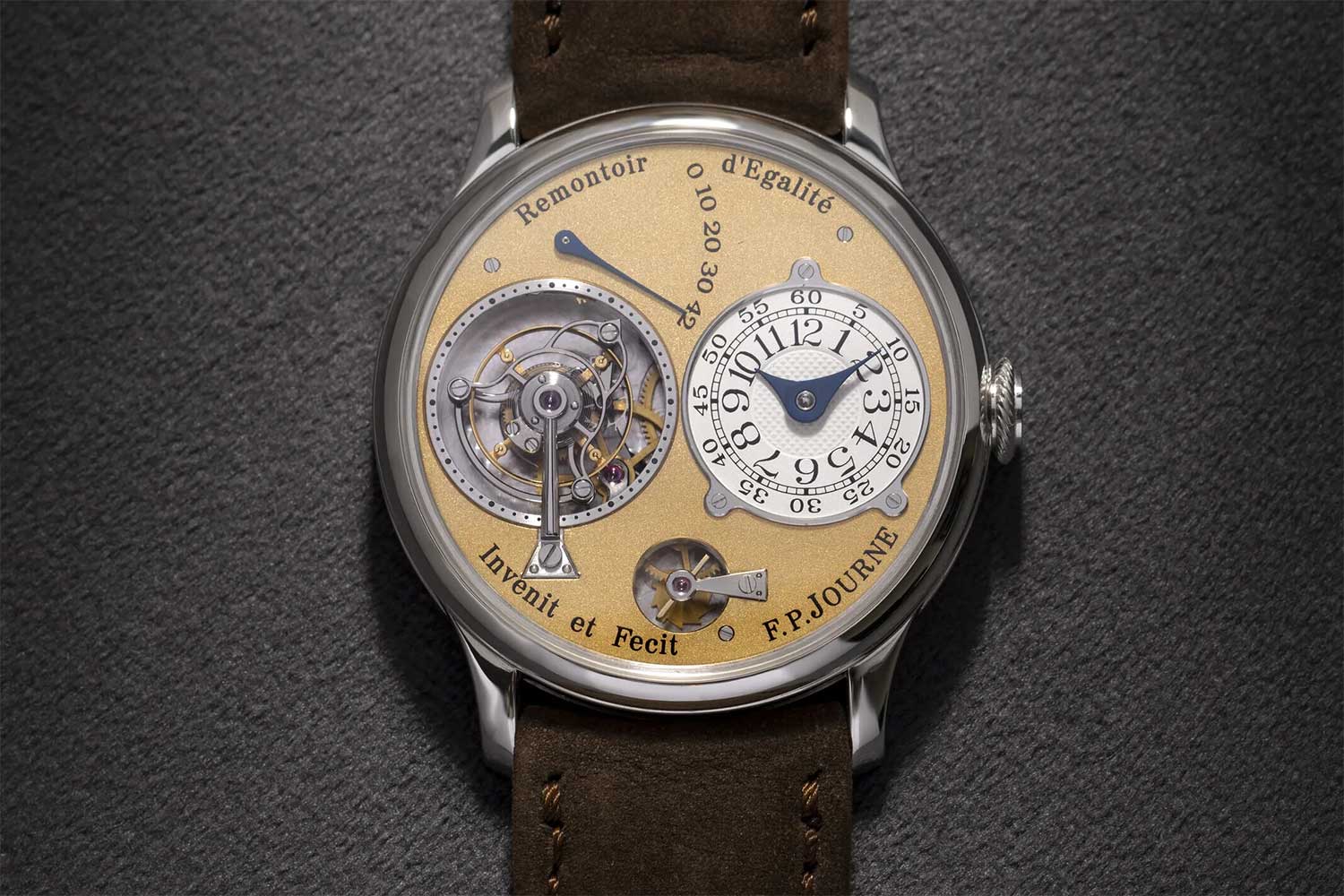
The fourth series examples are immediately distinguishable by their smaller screws on the dial
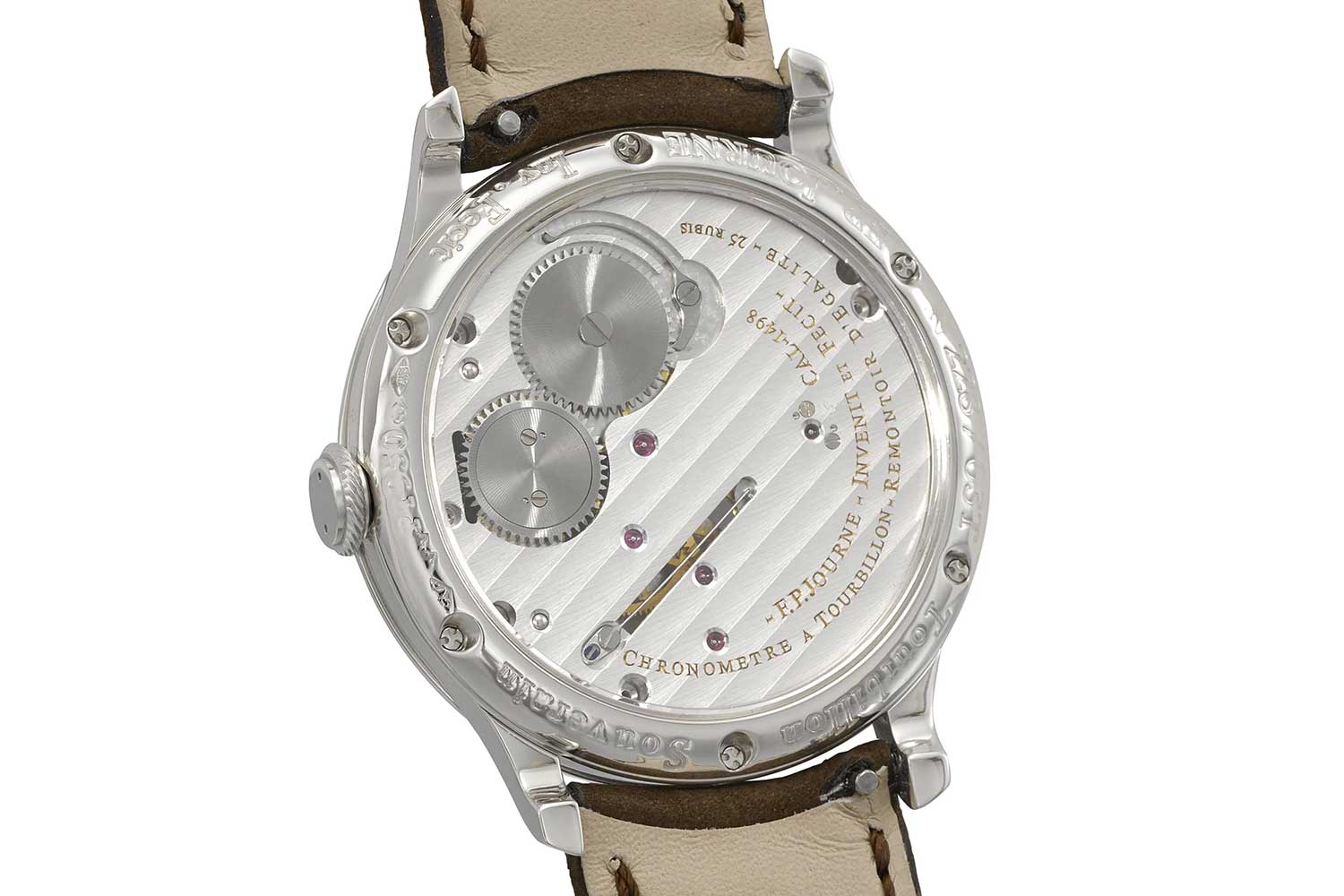
The inscriptions on the case back are deeper and more uniform as they were laser applied
From here onwards, the inscriptions on the caseback were laser-applied, giving them a deeper and more uniformly engraved appearance. During this time, F.P. Journe also introduced a Ruthenium model in a 99-piece limited edition. Unlike, all other examples, it was created with a larger 40mm case as opposed to 38mm. They featured platinum cases with ruthenium-coated dials and movements and bore all the same characteristics as the fourth series. The ruthenium limited edition had a numbering format of XX/99-01T, starting from 01/99-01T and progressing onwards.
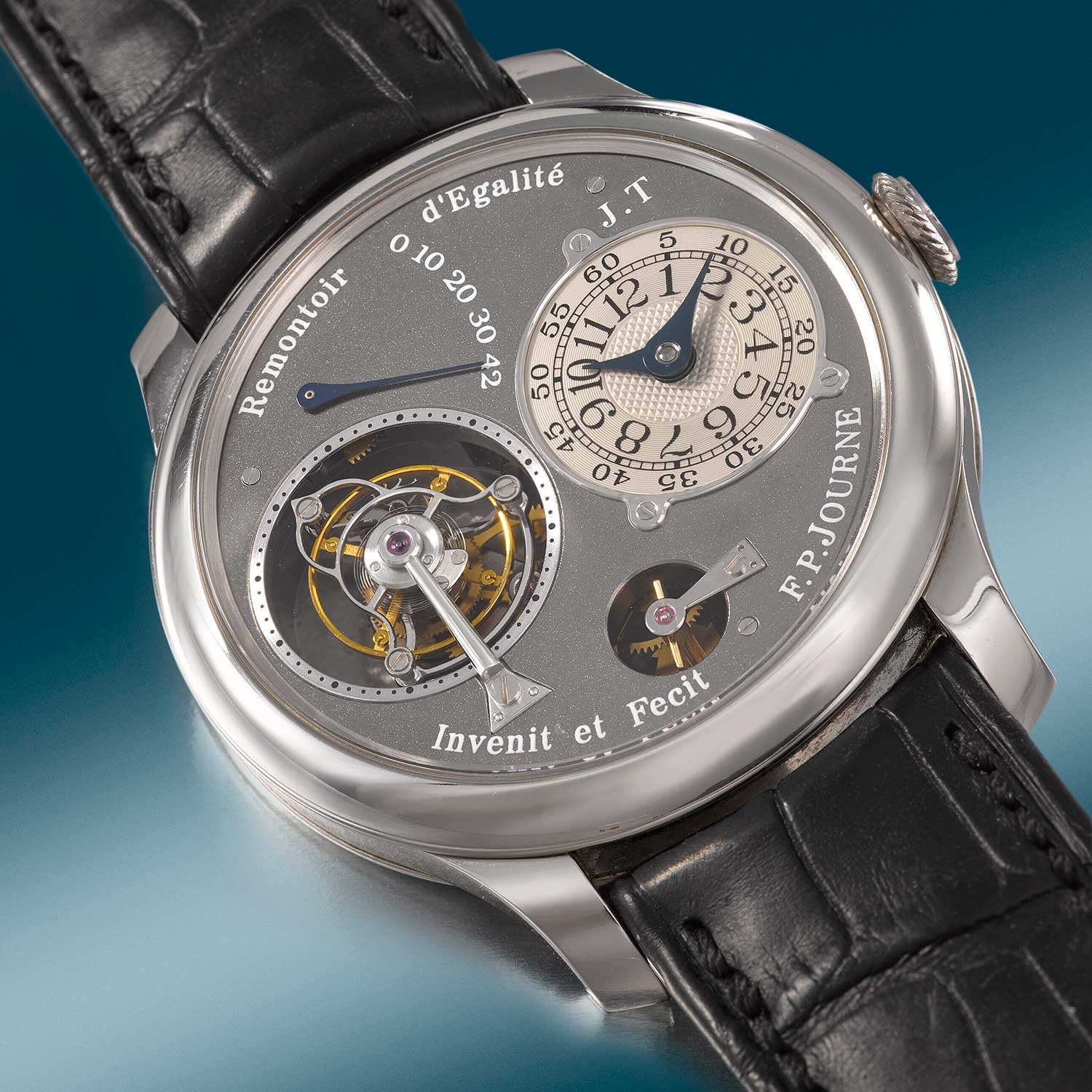
A limited-edition ruthenium example numbered 63/99-01T sold for US$1,085,731 at Christie’s Legendary and Unique Watches in November 2022, setting a record for the series (Image: Christie’s)
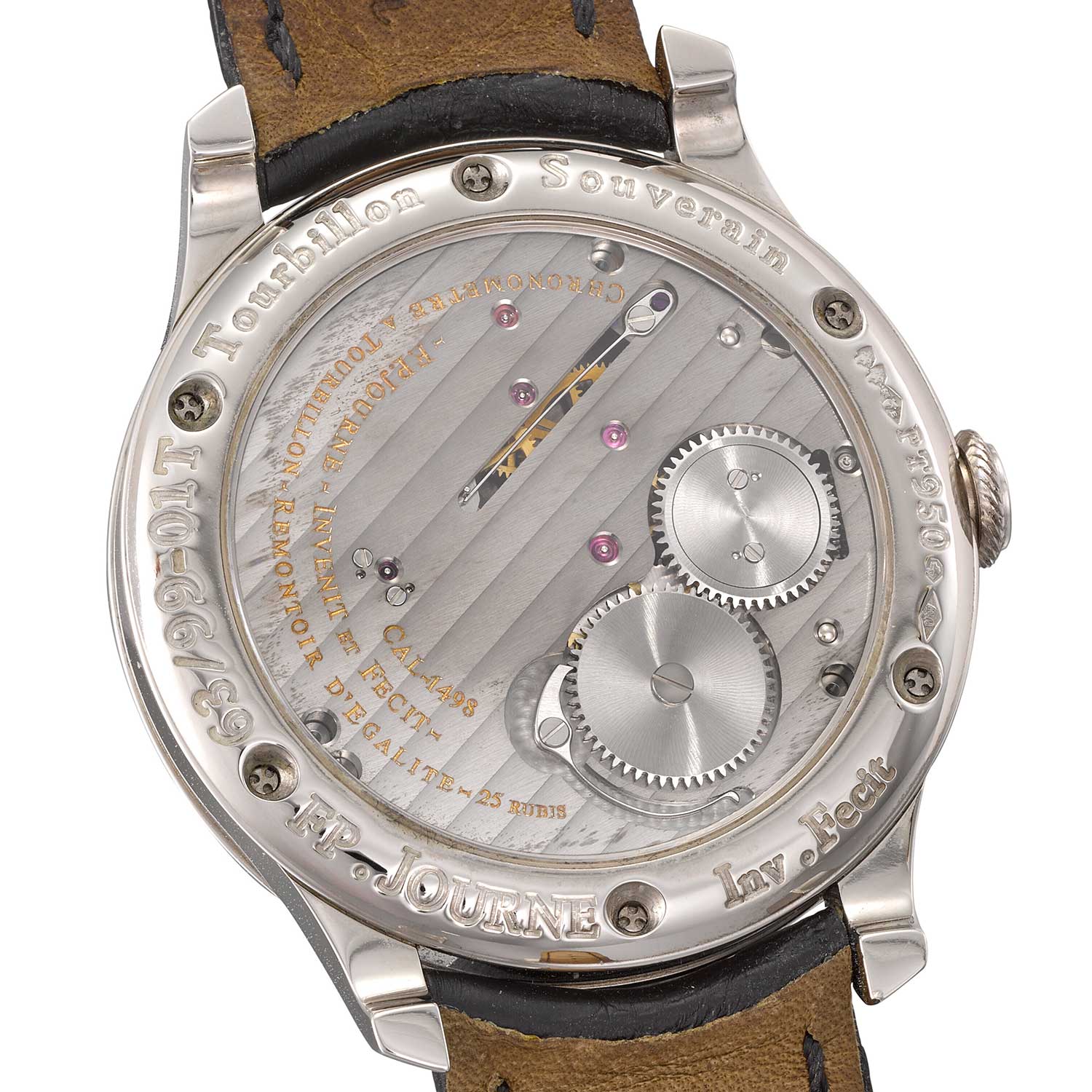
The limited-edition ruthenium model had ruthenium-coated movement plates and its own numbering format of XX/99-01T (Image: Christie’s)
It is worth remembering that 2001 also marked the launch of the Harry Winston Opus 1, a collaboration between F.P. Journe and then-CEO of Harry Winston Max Büsser. The Opus 1 project consisted of three models: the Tourbillon, Resonance, and Reserve de Marche, each produced in a limited run of six pieces, with each featuring a unique, handmade dial. They were based on the corresponding F.P. Journe models with brass movements but were housed in 38mm platinum Harry Winston cases with hinged lugs.
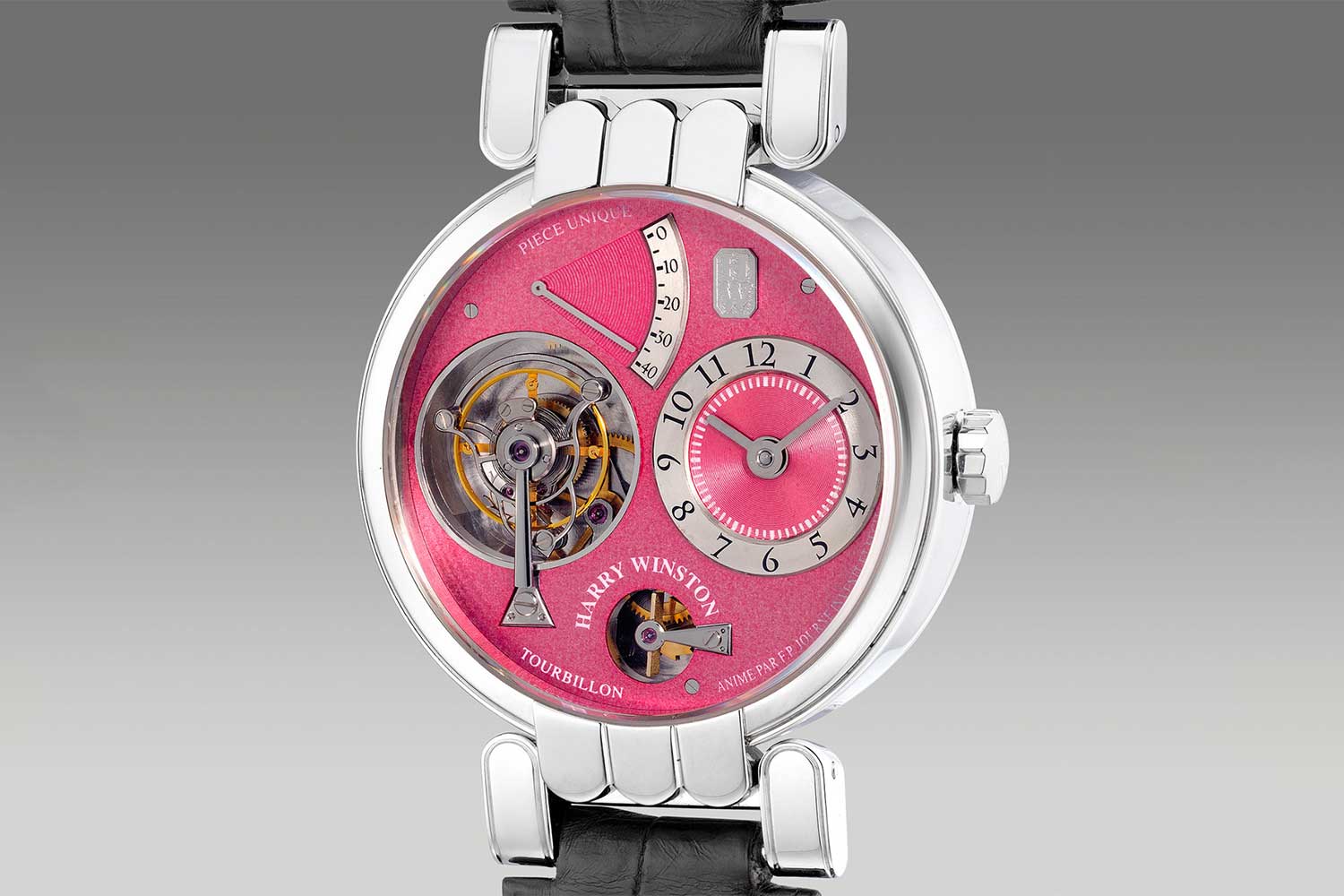
The Harry Winston Opus 1 Tourbillon is based on the design of the fourth series. This example has a unique pink dial and sold for US$471,072 at Phillips Hong Kong Watch Auction XII in June 2021 (Image: Phillips.com)
The Opus 1 Tourbillon was produced in six dial colours and was based on the fourth-series Tourbillon Souverain, bearing all the same attributes including smaller screws on the dial and a flat, black polished remontoir cock. However, the polished, screwed frame that characterizes all F.P. Journe Tourbillon Souverain watches was replaced by an applied chapter ring while the hands have a much simpler form. The fan-shaped power reserve indicator also features an applied scale.
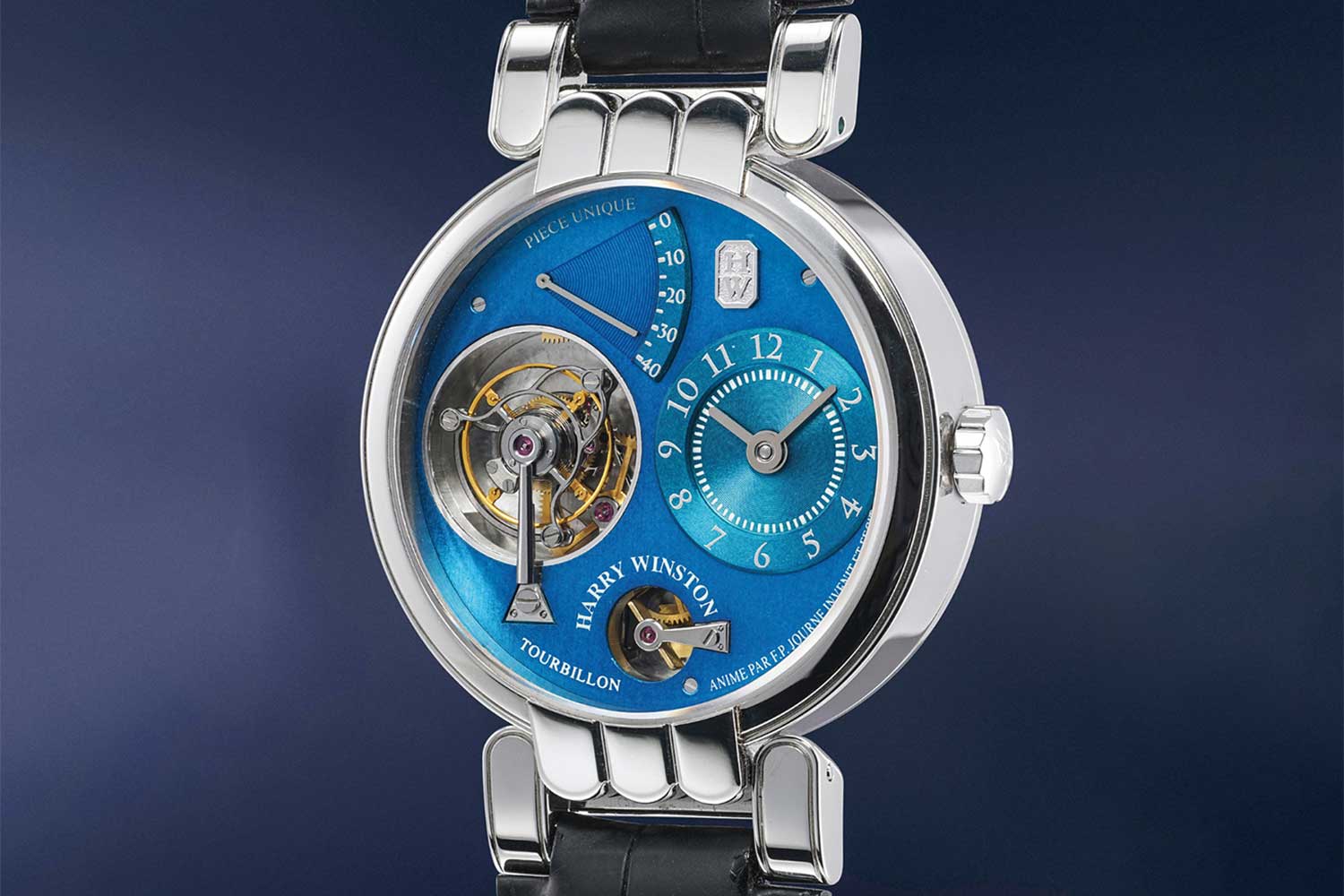
Opus 1 Tourbillon with a unique turquoise blue dial fetched US$503,752 at Phillips Geneva Watch Auction XIII in May 2021 (Image: Phillips.com)
Moreover, although sharing the same 38mm width, the Opus 1 Tourbillon sat slightly smaller on the wrist owing to its hinged lugs. Additionally, it boasted a thicker profile, standing at 12mm in height compared to the Tourbillon Souverain’s 9.9mm. The movement, however, was identical to the Tourbillon Souverain apart from having the added Harry Winston branding and model name.
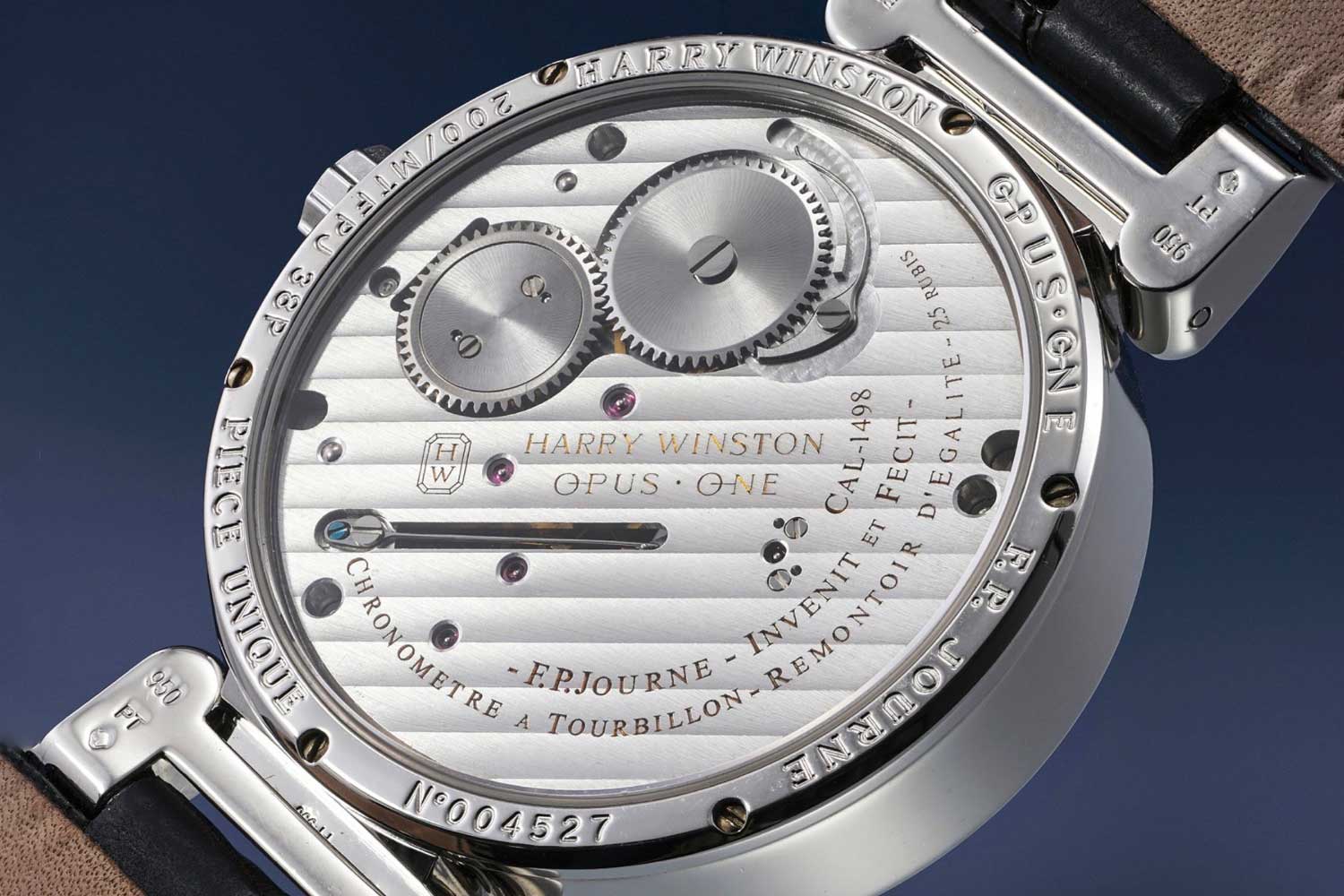
The rhodium-plated brass movement bears the Harry Winston branding (Image: Phillips.com)
Tourbilon Nouveau (Tourbillon Souverain avec Seconde Morte, 2003 – 2018)
The introduction of the Tourbillon Nouveau in 2003 marked the end of brass movements and yellow gold dials. From here onwards, all of F.P. Journe’s calibers were made in rose gold (18K 5N). The cases were offered in both 38mm or 40mm sizes, in either platinum or red gold, while the dials were made in white or red gold.
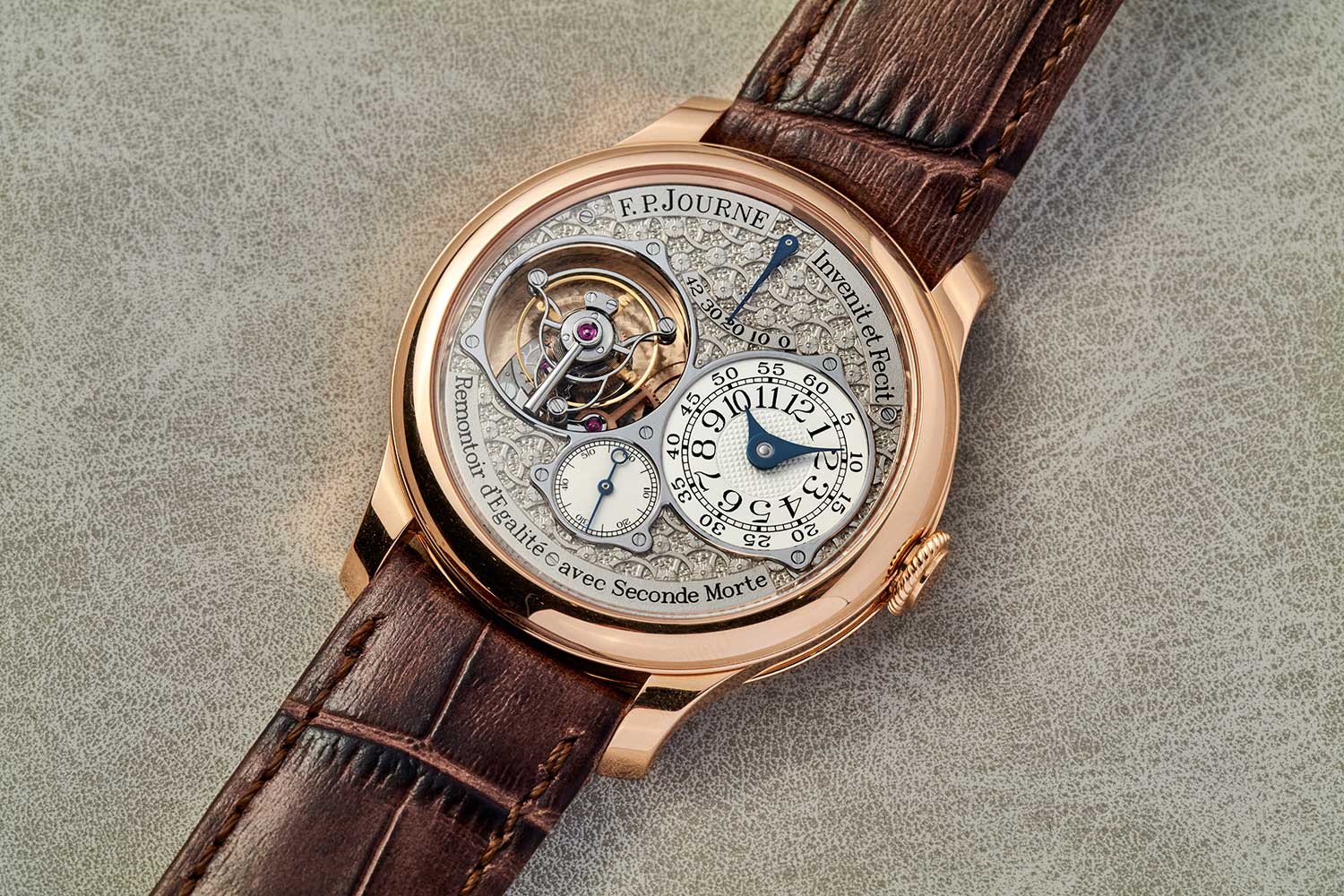
The Tourbilon Nouveau ‘Régence Circulaire’ with a hand-engraved white gold dial that fetched CHF 453,600 at Christie's The Art of F.P. Journe auction in May
The introduction of the new caliber 1403 marked the incorporation of a dead seconds indication. Journe had previously expressed a sense of oversight in not considering the inclusion of a deadbeat seconds indication in the original model, as a dead seconds is a convenient by-product of the remontoir’s function. The movement was now slightly thicker at 7.2mm, compared to the caliber 1463’s 6.6mm, though the overall case height remained at 9.9mm.
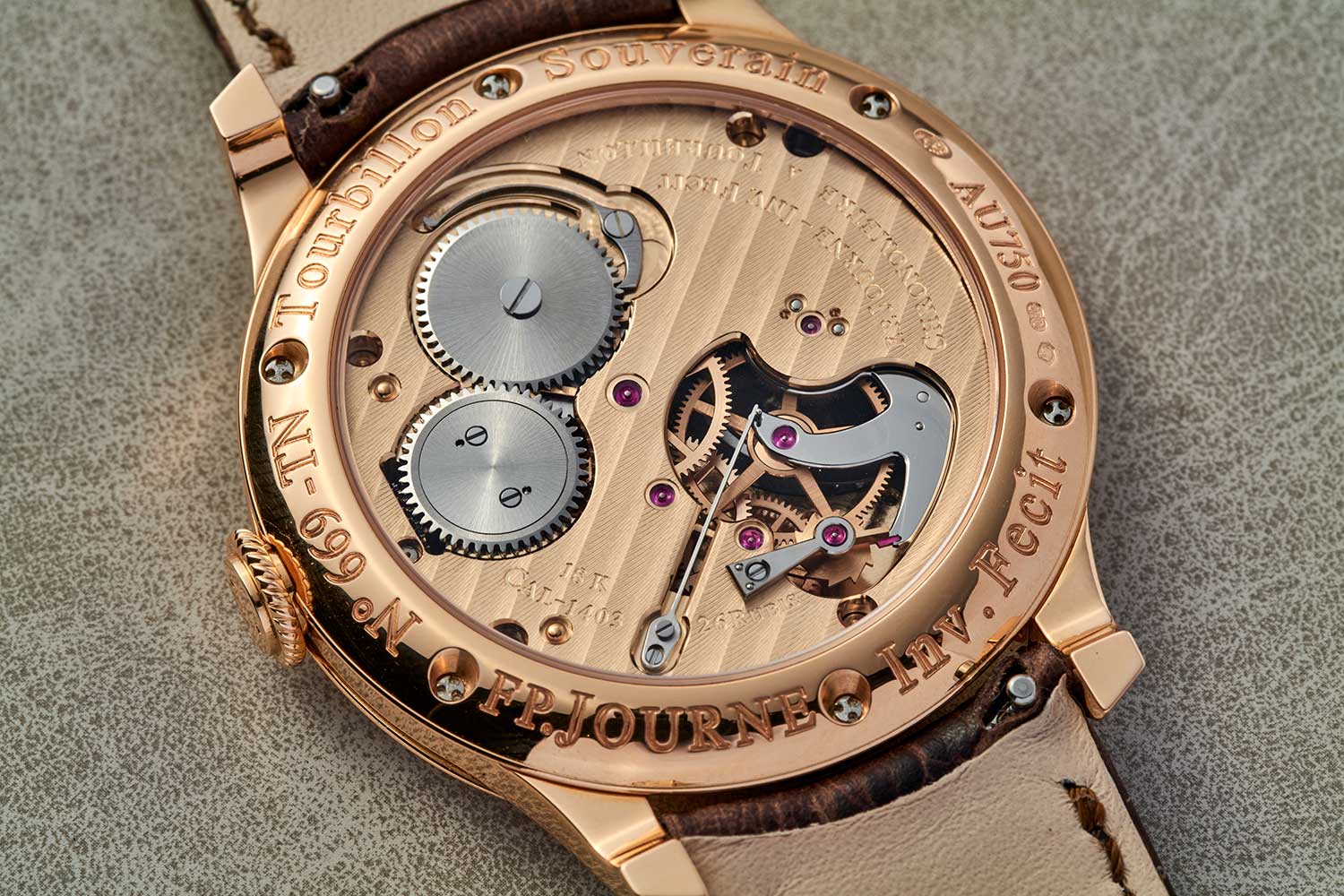
Visible on the caseback , the new Caliber 1403 with a cut-out on the bridge that showcases the entire remontoir mechanism
The Tourbillon Nouveau can be immediately distinguished by its small seconds counter at six o’clock, as well as its centered power reserve indicator at 12 o’clock that provided a greater sense of symmetry. With the incorporation of a small seconds counter, the tourbillon no longer had to double as a seconds indicator and thus its aperture no longer required seconds markers. As such, the subdials and tourbillon aperture were encircled by a single steel frame that was fastened to the dial with screws. The black polished cock for the tourbillon was shorter and resided within the tourbillon aperture, further enhancing the symmetry of the watch.
Visible on the caseback, the full bridge of the movement was now open-worked to reveal the entire remontoir mechanism with the stop wheel held in place by a flat, black-polished cock right next to the remontoir blade spring.
The cases were assigned serial numbers in the format of XXX-04TN, but it is believed that this practice ceased around XXX-05TN. Subsequently, all cases were designated with an individual serial number format of XXX-TN.
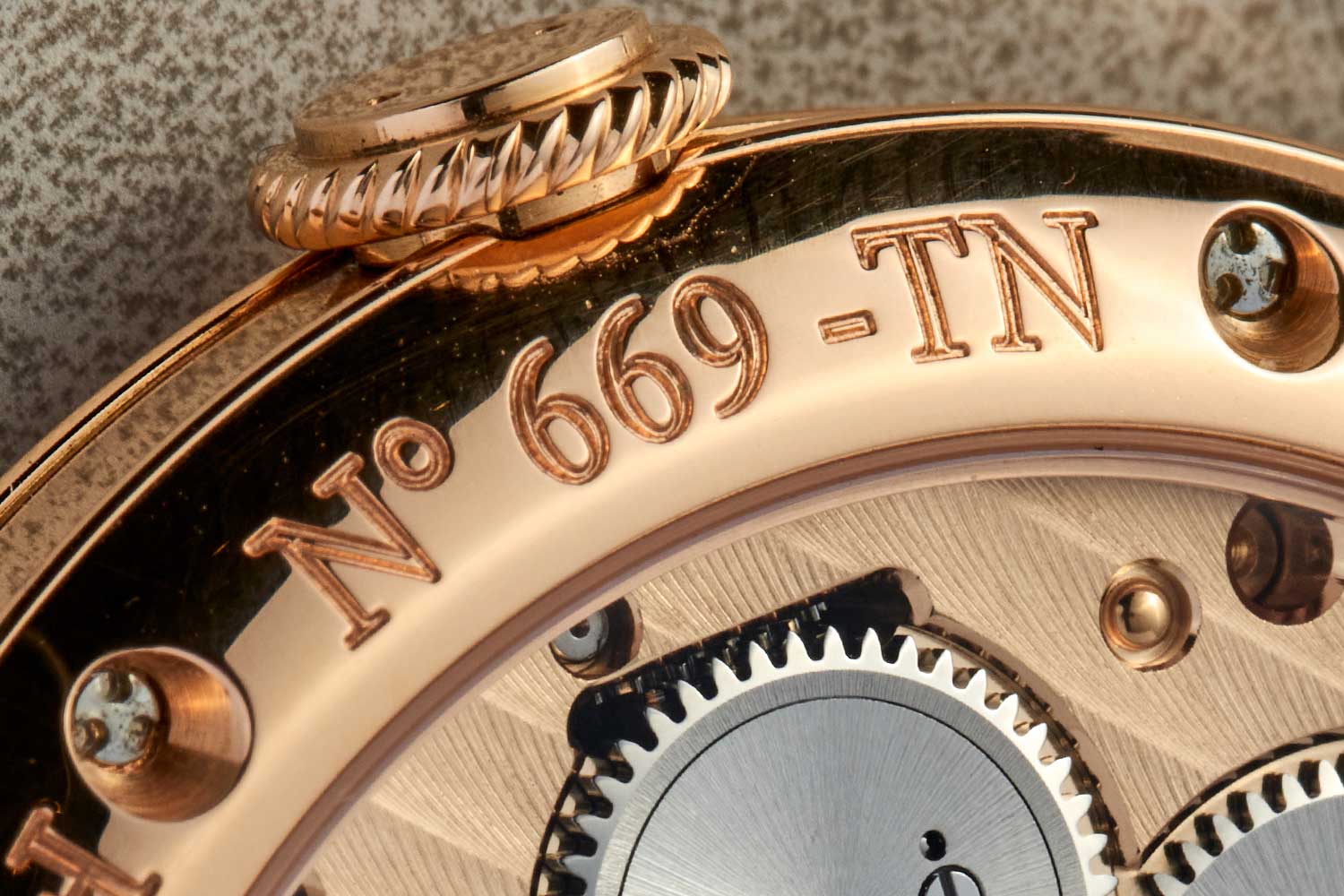
Individual serial number format of XXX-TN
The Tourbillon Nouveau, with the lengthiest production span, served as the foundation for an array of special and distinctive editions. These included the Black Label, which was limited to two pieces per boutique each year, boutique and retailer editions, as well as one-off creations for occasions like Only Watch. The reference witnessed the introduction of various stone dials, such as black mother of pearl for Sincere’s 50th anniversary, a green aventurine for The Hour Glass, and even a jade dial.
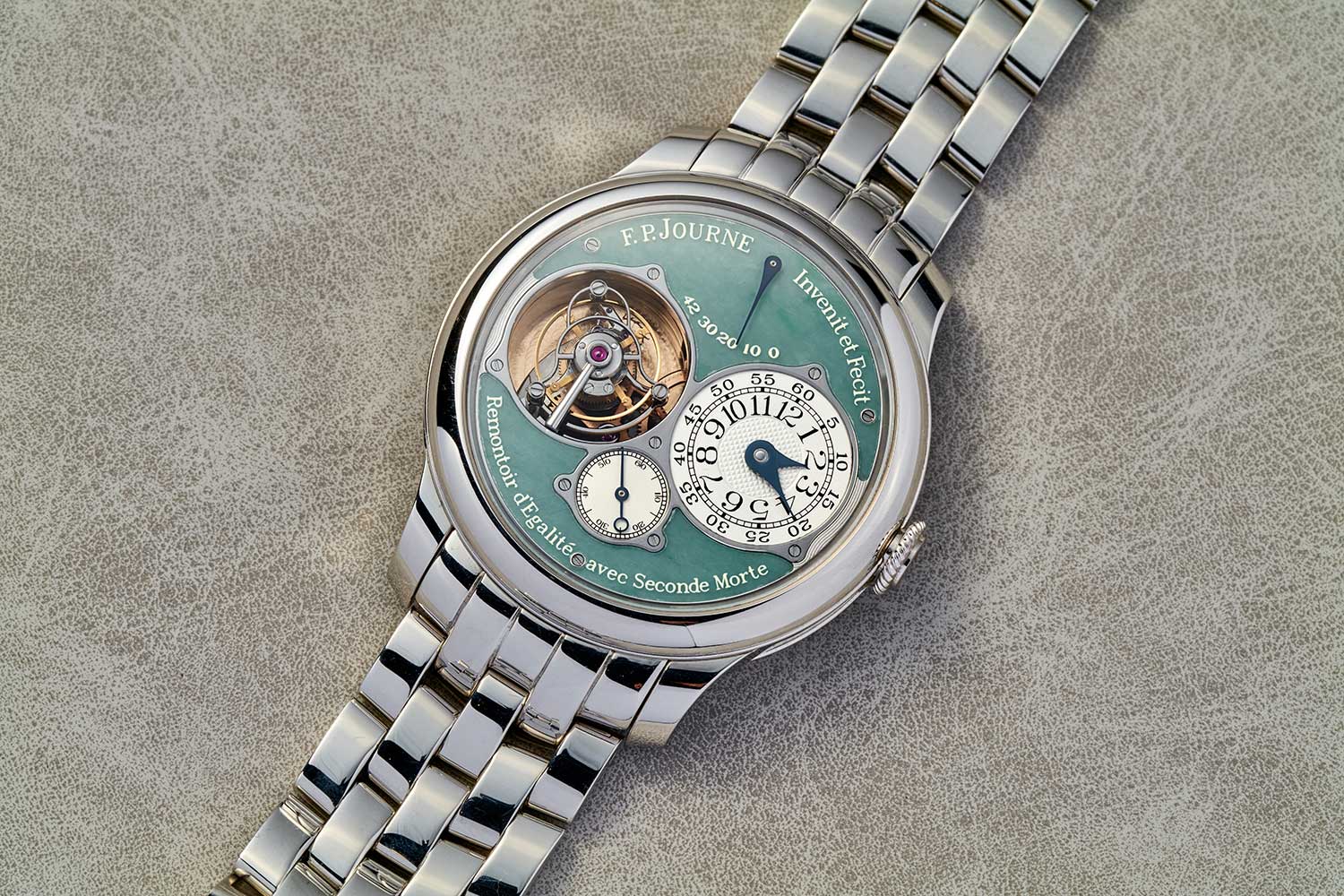
A spectacular example with a full platinum bracelet and a jade dial which sold for a whopping CHF 1,134,000 at Christie's The Art of Journe
Based on data provided by EveryWatch, the Tourbillon Souverain subscription watches have come to market only six times at auctions over the years, with the first example surfacing in 2015. The highest-selling example to date is the No. 1/20, which fetched CHF 3,539,000 (USD 3,832,727) at Phillips Geneva Watch Auction: XIV during the pandemic in 2021, naturally also setting a record for the series and model. Most recently, at Christie’s The Art of Journe, the No. 2/20 sold for CHF 2,707,000 (USD 3,017,401) inclusive of fees. Being the earliest examples of Journe’s first watch, the subscription watches command a significant premium over the subsequent series, exceeding twice the price of the second series, more than triple that of the third series, and surpassing sixfold the value of the fourth series.
The second series has only surfaced once at auction, fetching USD 1,361,000 at Phillips New York Watch Auction: SIX in June 2022. Although it is near-identical to the first series with all the same artisanal attributes, a conspicuous price disparity of approximately 181% persists, presenting them as highly appealing propositions. Furthermore, despite there being a greater divergence in characteristics between the second and third series, the price differential is comparatively narrower, approximately 37%, making the second series particularly enticing.
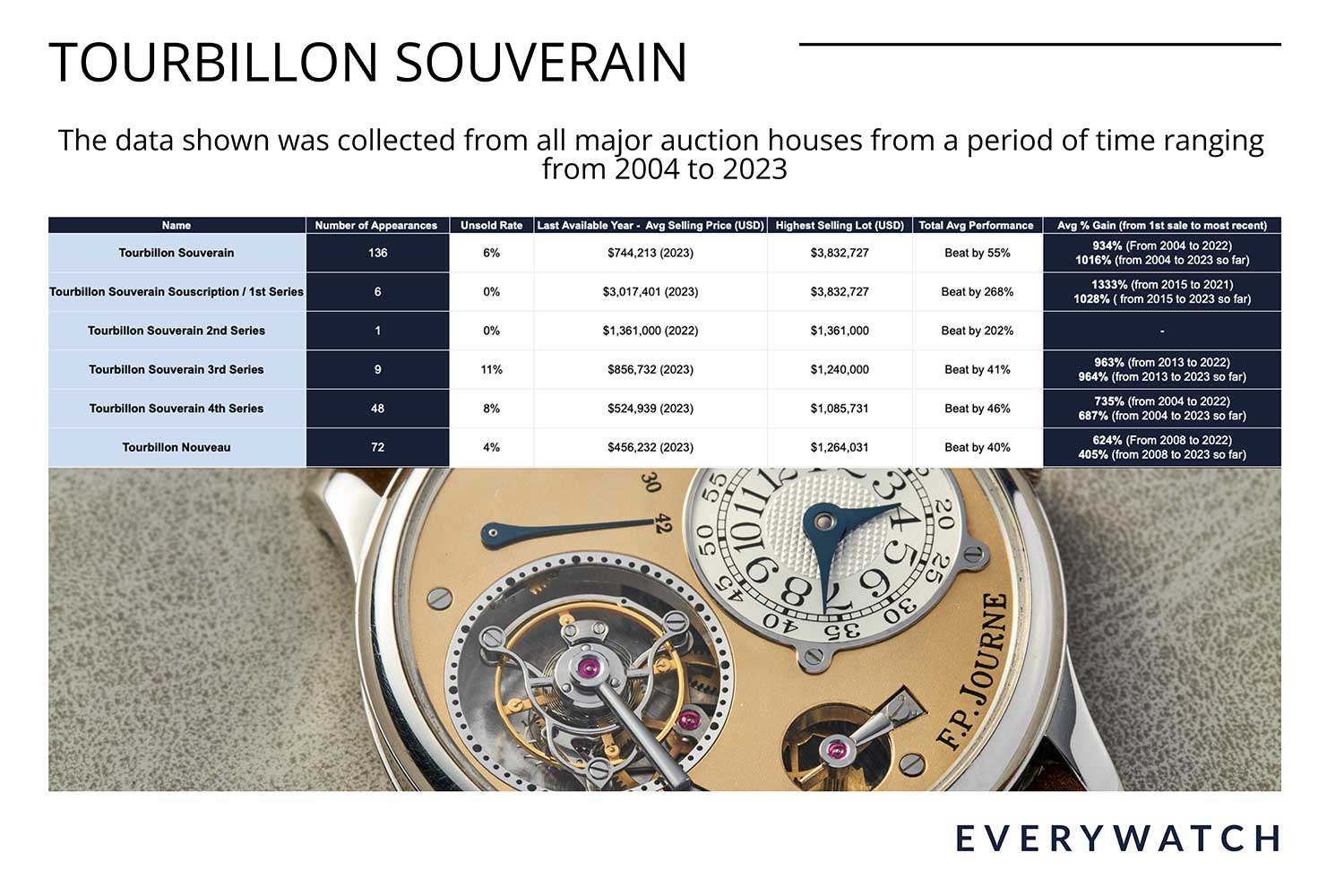
(Data from Everywatch)
“The second series of the Tourbillon Souverain, with the fewest appearances at auction, could potentially see an impressive yield in its next appearance,” Giovanni Prigigallo, watch specialist and head of content and business development at EveryWatch, explains. “Beyond the Tourbillon Souverain Souscription, which notably exceeded estimates by an average of 268%, only the second series approached this with a 202% average overperformance. This implies a significant underestimation of collectors’ interest in these earlier masterpieces.”
Third-series examples have surfaced nine times at auction, with the highest-selling example fetching USD 1,240,000 at Phillip’s New York Watch Auction: SEVEN in December 2022 and the latest selling price being USD 856,727 at Christie’s The Art of Journe. The relatively slim disparity in pricing between the second and third series could potentially suggest that the material distinctions between the second and third series are not as widely acknowledged or considered. In other words, while the first series is easily and widely understood to be the first 20 watches, the second and third series are regarded in much broader strokes as “early F.P. Journe”, with brass movements being highly valued at the most fundamental level of study as they signify early production.
With the highest production numbers among the initial four series, the fourth series has emerged the most frequently at auction, appearing a total of 48 times with the best-performing specimen being a ruthenium example which fetched USD 1,085,731 at Christie’s Legendary and Unique Watches in November 2022. The average performance difference between the third and fourth series is more distinct — USD 856,727 compared to USD 524,939 as of this year — which suggests a clear recognition and assessment of the material difference between the two series and, at the very least, an awareness of their higher production numbers.
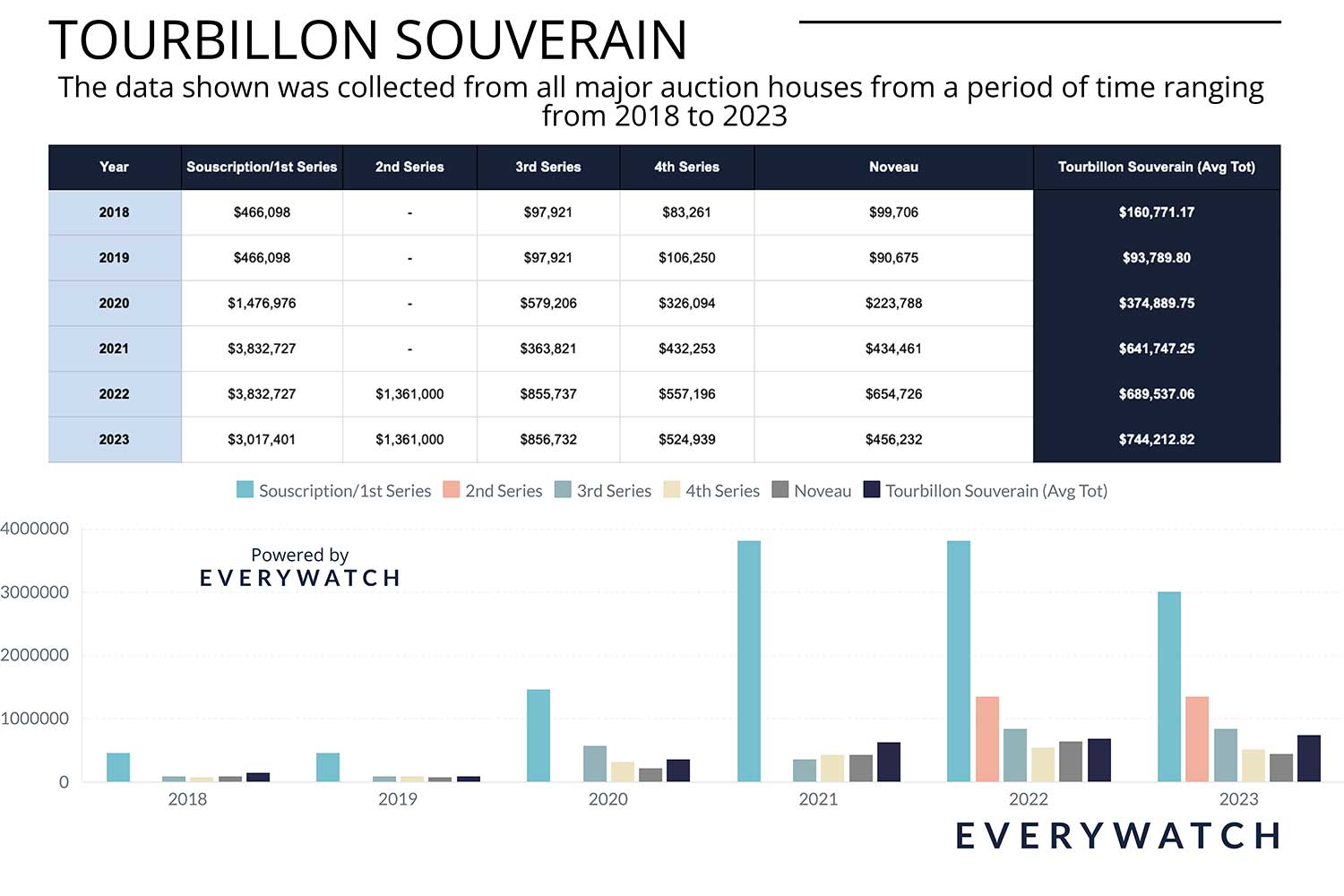
(Data from Everywatch)
The Harry Winston Opus 1, on the other hand, has only surfaced twice at auction, with the first instance featuring a turquoise blue dial selling for USD 503,752 in May 2021 and a pink dial for USD 471,072 a month later. As unique pieces, both sales achieved prices comparable to, and even surpassing, the average price of the third and fourth series that year.
Notwithstanding their status as unique pieces, these watches still fall considerably below the prices fetched by the earlier series. This disparity can be attributed, in part, to their classification as fourth series iterations. However, additional factors that may contribute to this divergence include the unconventional case style and the absence of the renowned elegance that has traditionally distinguished F.P. Journe watches. Another potential contributing factor that may have influenced the perceived value of these watches is that Journe does not offer servicing for the Opus watches, with Harry Winston assuming the responsibility going forward.
Prigigallo explains, “The Harry Winston Opus 1 is not fully appreciated just as some series of the Chronomètre à Résonance and Tourbillon Souverain. However, I believe that people somewhat started appreciating the rarity of such watches, which are even rarer than the Souscription pieces and sell for a third of the price. They will for sure make an incredible future collectible and they now are a total bargain considering the recent auction results from May.”
The longest-running series, the Tourbillon Nouveau has made 70 appearances at auction to date. Recently, an extraordinary instance boasting a jade dial in platinum case and bracelet achieved a remarkable USD 1,264,031 at Christie’s The Art of Journe, setting a record for the model. Comparatively, the average price of a Tourbillon Nouveau stands at USD 456,232. This figure naturally falls below that of the fourth-series Ref. T, as the Ref. TN ultimately marked a transition to rose gold movements, instantly distinguishing it as a contemporary example of F.P. Journe’s watches.
“Both the fourth series and the Tourbillon Nouveau demonstrated a performance below the average of the overall model. Despite this, all flagship models from each series successfully fetched over 1 Million USD, with the Tourbillon Souverain Souscription surpassing this significantly at 3.8 Million USD,” Prigigallo remarks.
Summing up, Prigigallo asserts, “Compared to the Chronomètre à Résonance, the Tourbillon Souverain commands a significantly higher average price, likely due to the better comprehensibility and visual appeal of the tourbillon complication on the watch dial.
In line with the trend observed across the luxury watch market, prices for all Tourbillon Souverain timepieces have experienced a surge, beginning in 2020. Notably, the average price for a subscription model soared from USD 466,098 in 2019 to USD 1,476,976 in 2020, effectively tripling within this timeframe.
With the onset of the pandemic, there was an initial decline in most asset classes including luxury watches, but what followed was a dramatic price hike. This was likely caused by a rise in disposal income due to the rapid decline of air travel and its associated spending, as a result of widespread lockdown across nations and boarders. In other words, devotees of F.P. Journe suddenly found themselves with more funds to allocate toward their passion, while novices finally found the time to delve deeper into the brand through research and exploration.
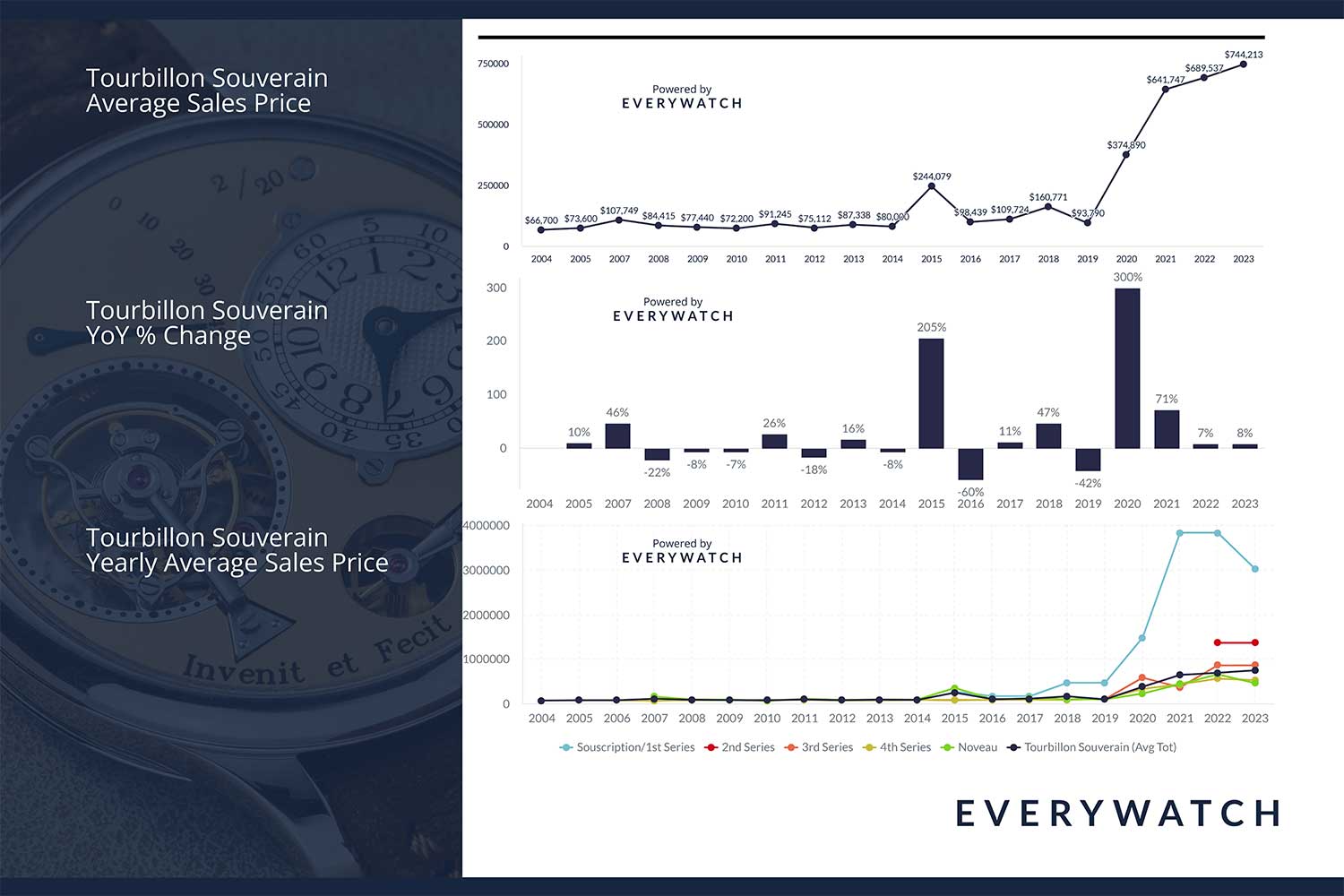
(Data from Everywatch)
The subsequent decline in the prices during the years 2022 to 2023 was largely a function of market corrections, notably in the crypto space, geopolitics and the rise in the cost of funds. The initial cause of the decline in luxury watch prices is commonly attributed to losses in the cryptocurrency market. The onset of the Russian-Ukraine war later led to an energy crisis which pushed inflation rates higher, leading to changes in central banking policies which called for higher interest rates as a countermeasure. The aftermath was an inevitable slowdown in economic expansion and consumer demand, leading to the present day where banking crises and recessionary pressures have become the order of the day. Looking at the price action for the Tourbillon Souverain, it can be deduced that they, as with luxury watches in general, are not immune to the ebbs and flows of the wider market. Rather, they are connected, and react in accordance to how buyers relate to the changes in the macro economy, the ratio of cost (of a luxury watch) to disposable income, taste and preferences, the resumption of air travel and the loss of “easy money”.
However, apart from the price trend observed, it is worth noting that F.P. Journe watches are still priced significantly higher compared to the pre-pandemic era (USD 3,017,401 in 2023 vs USD 446,098 in 2018 for a subscription model, and USD 856,732 in 2023 vs USD 97,921 in 2018 for a third series), which appears to be setting a new baseline whereby the market is now awoke with a better appreciation for F.P. Journe relative to other brands in the upper echelons of the luxury watch market. This realization has set market expectations higher in general, thus enabling F.P. Journe watches to better hold their value in relative terms.
Particularly, the demand for early examples of Journe’s two most seminal works, the Tourbillon Souverain and Chronomètre à Résonance continues to drive significant value in the market. The Tourbillion Souverain Subscription in particular is going for similar valuations to Patek Phillipe’s ref. 2499, making it amongst the most coveted timepieces that the watch market has to offer today.
EveryWatch, the largest watch market data provider, aggregates historical and current watch information from over 250 auction houses and marketplaces worldwide. Serving collectors, industry professionals, and enthusiasts, the platform delivers a comprehensive 360-degree view of the market, enabling users to efficiently discover their next watch, assess accurate valuations, and monitor market trends. Leveraging an extensive database with records dating back to 1989 and millions of data points, EveryWatch offers detailed historical prices, validated charts, and exclusive statistics. Users can benefit from daily alerts, facilitating the discovery of the best deals on desired watches. With a focus on catering to watch lovers of all levels, from novice collectors to seasoned experts, EveryWatch is the leading platform for unbiased and dependable watch information. Stay tuned for the upcoming launch of EveryWatch, which will provide unprecedented access to the world of watch market insights. To join the waitlist, visit Everywatch.com Information presented are sourced from public domains. EveryWatch and Revolution make no guarantee as to the accuracy of the information concerned, which is provided on “as-is” basis. EveryWatch and Revolution expressly disclaim any warranty of fitness for a particular purpose or non-infringement. EveryWatch and Revolution will not be responsible for any loss or damage resulting from use of said information and from any reliance on such information. Past performance may not be indicative of future results.
































